A New WIFI Naming Convention
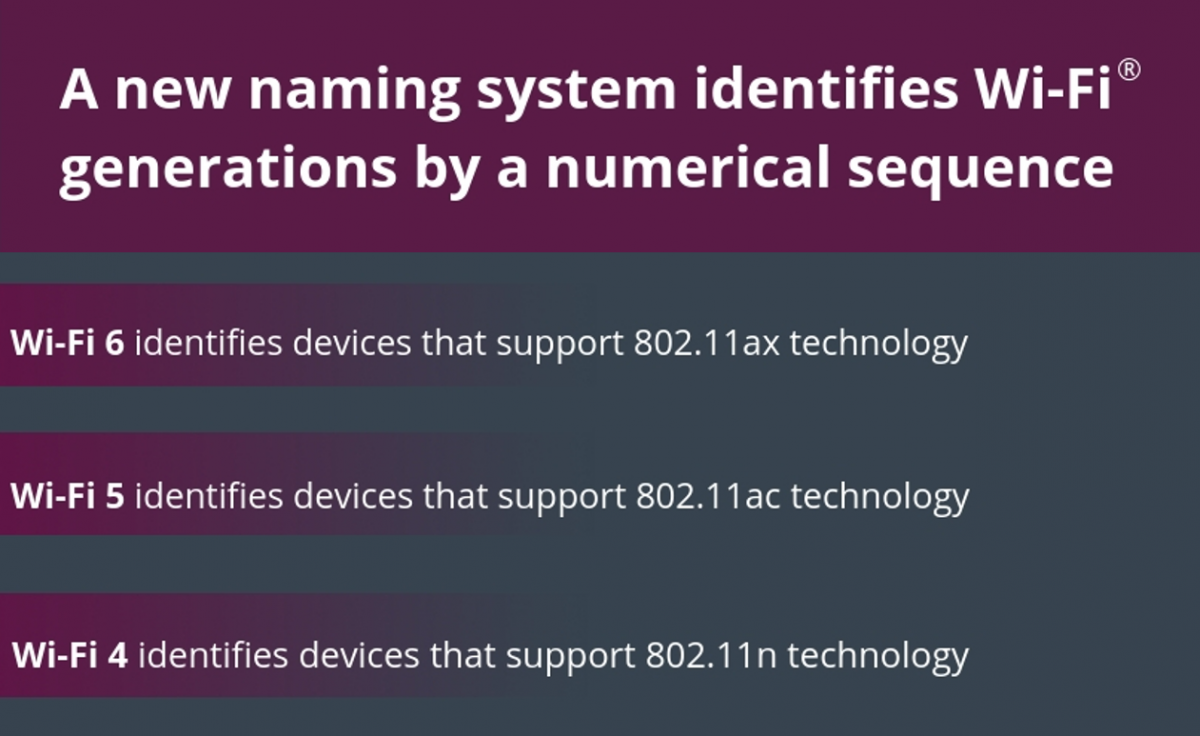
Back in 2016, we first heard of rumours about a newer Wi-Fi standard that will likely replace the 802.11ac standard, a.k.a Wi-Fi 5. It is rumoured that it will have higher data throughput and better performance in every aspect.
Now, these rumours became facts when we first saw 802.11ax wireless routers during CES 2018. 802.11ax is also called “Wi-Fi 6” by the Wi-Fi Alliance.
The 802.11ax or simply Wi-Fi 6 is engineered to address all the issues of the 802.11ac standard or Wi-Fi 5 falls short.
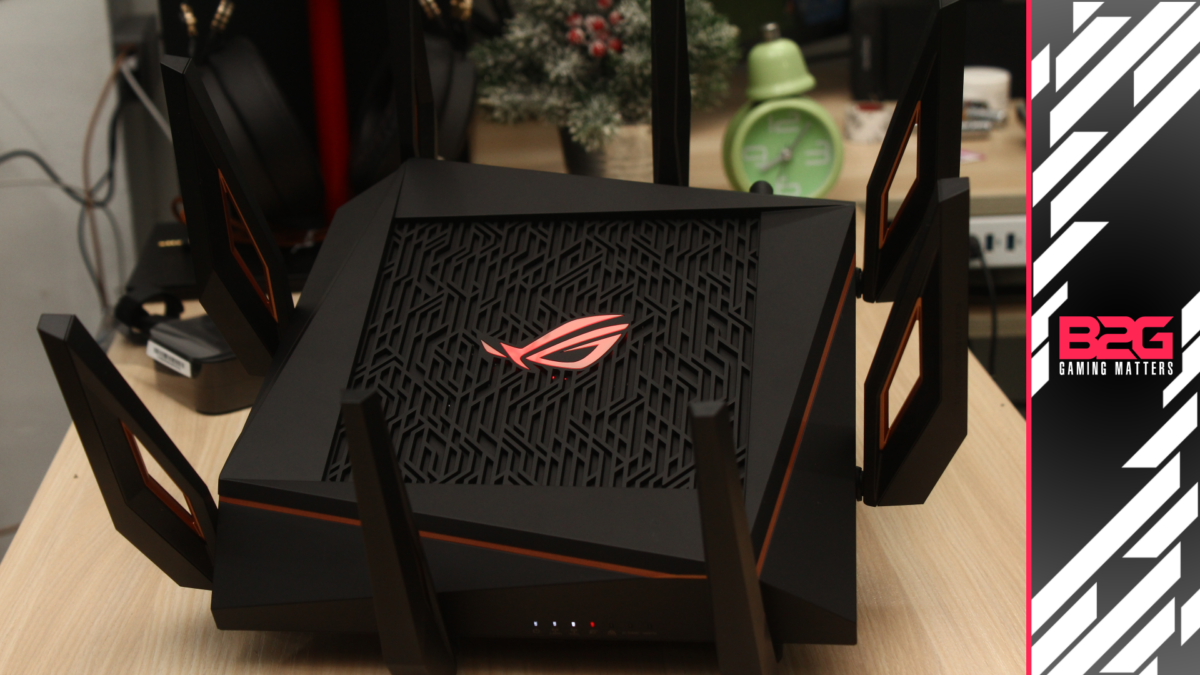
With that being said, ASUS, one of the most trusted brand in terms of computer components, was kind enough to send us one of their latest Wi-Fi routers of 2018, the ASUS ROG Rapture GT-AX11000. This router is one of their top of the line wireless router in their 2018 product lineup that features 802.11ax standard.
ASUS ROG Rapture GT-AX11000 Tri-band WiFi Gaming Router
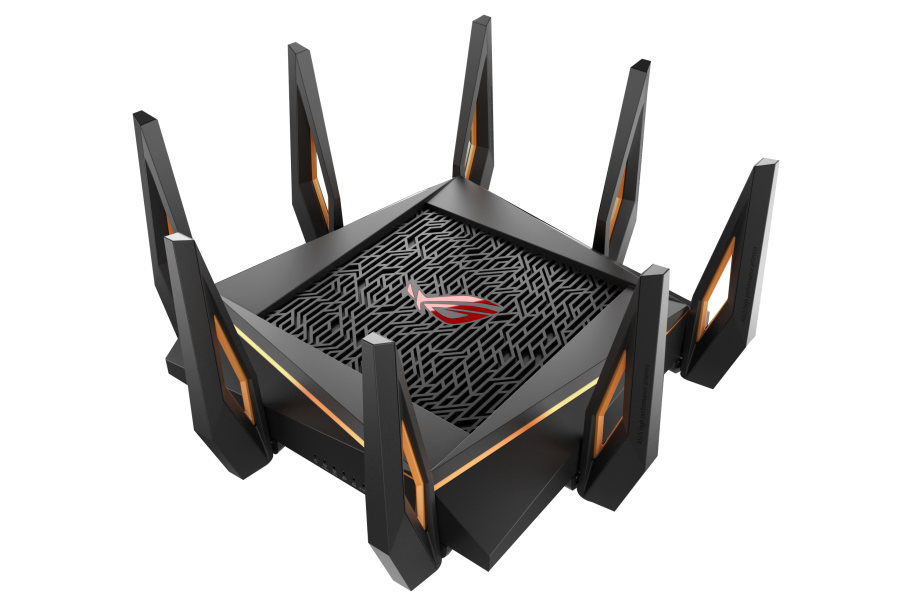
Specification
ASUS ROG Rapture GT-AX11000 Tri-band WiFi Gaming Router
- IEEE 802.11a/b/g/n/ac/ax, IPv4, IPv6
- Data Rate
- 802.11ax (2.4GHz/5GHz) : up to 1148 Mbps/
4804 Mbps
- 802.11ax (2.4GHz/5GHz) : up to 1148 Mbps/
- External antenna x 8
- Operating Frequencies
- 2.4G Hz, 5 GHz-1, 5 GHz-2
- 1.8 GHz quad-core processor
- 256 MB Flash | 1 GB RAM
- Wi-Fi Technology
- OFDMA (Orthogonal Frequency Division Multiple Access), Beamforming: standard-based and universal, 1024-QAM high data rate, 20/40/80/160 MHz bandwidth.
- Encryption
- 64-bit WEP, 128-bit WEP, WPA2-PSK, WPA-PSK, WPA-Enterprise, WPA2-Enterprise, WPS support
- Access Control
- Parental control, Network service filter, URL filter, Port filter
- Management
- UPnP, IGMP v1/v2/v3, DNS Proxy, DHCP, NTP Client, DDNS, Port Trigger, Port Forwarding, DMZ, System Event Log
- VPN Support
- IPSec Pass-Through, PPTP Pass-Through, L2TP Pass-Through, PPTP server, OpenVPN server, PPTP client, L2TP client, OpenVPN client.
- WAN Connection
- Automatic IP, Static IP, PPPoE(MPPE supported), PPTP, L2TP
- Ports
- RJ45 for Gigabits BaseT for WAN x 1 and for LAN x 4
- Support Ethernet and 802.3 with max. bit rate 2.5Gbps Mbps and auto cross-over function(MDI-X)
- USB 3.1 Gen 1 x 2
- Button
- WPS Button, Reset Button, Power Button, Wireless on/off Button, Boost Key.
- Features
- Link Aggregation – 802.3ad, MU-MIMO, Traffic Analyzer, Adaptive QoS, WTFast Gamers Private Network, AiProtection Pro, Parental Control
- Guest Network : 2.4 GHz x 3, 5 GHz-1 x 3, 5 GHz-2 x 3
- VPN server : IPSec Pass-Through, PPTP Pass-Through, L2TP Pass-Through, PPTP Server, OpenVPN Server
- VPN client : PPTP client, L2TP client, OpenVPN client
- Mac OS Backup
- Enhanced media server (AiPlayer app compatible)
- AiCloud personal cloud service
- 3G/4G data sharing
- Printer Server
- Multifunctional printer support (Windows only)
- LPR protocol support
- Download Master
- Support bt, nzb, http, ed2k
- Support encryption, DHT, PEX and magnet link
- Upload and download bandwidth control
- Download scheduling
- AiDisk file server
- Samba and FTP server with account management
- Dual WAN, IPTV support, Roaming Assist
- Operation Modes
- Wireless Router, Access Point, Media Bridge
Unboxing – ASUS ROG Rapture GT-AX11000 Tri-band WiFi Gaming Router
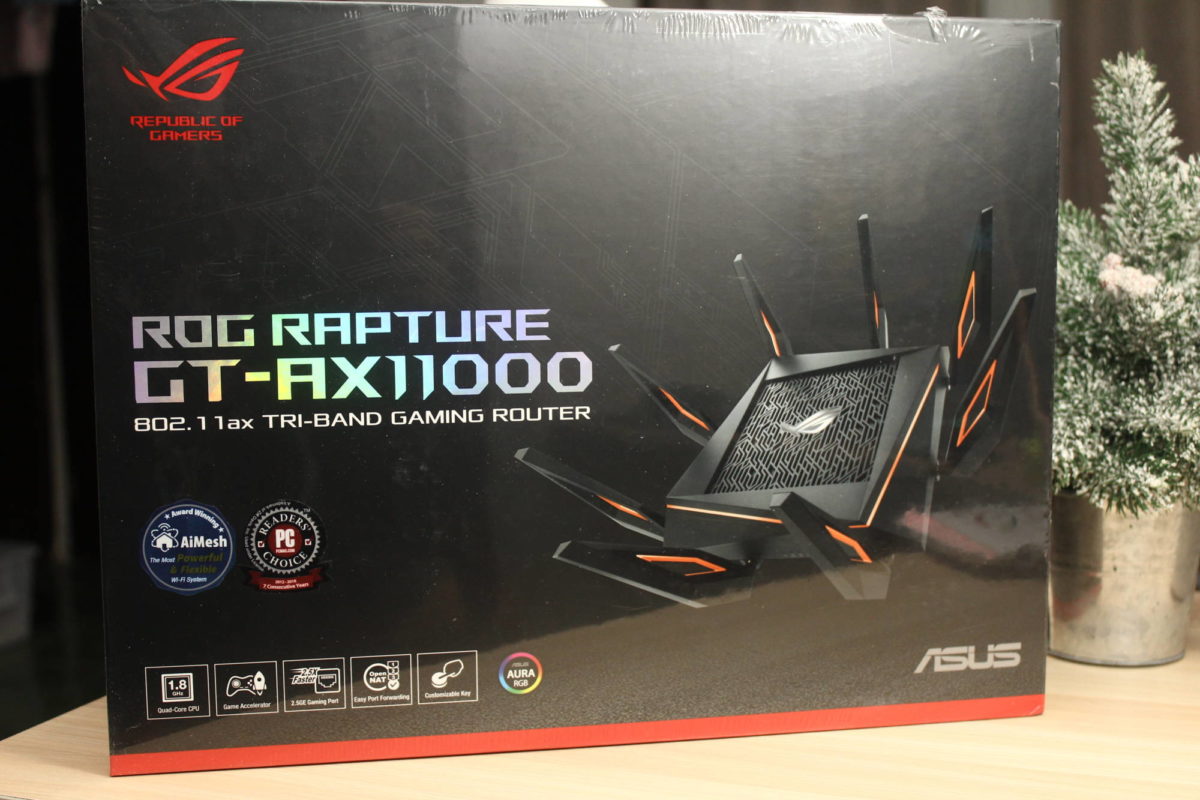
Taking a closer look at the box, the whole package is wrapped with plastic. This prevents any trivial damages and it also prevents the box from opening.
The front side of the box highlights a few key features of the router, an award badge, the actual image of the router, support for ASUS Aura RGB Sync, model name, and the logo of the brand.
Another worth mentioning is the highlight of AiMesh badge. We will discuss more of that at the later section of this article.
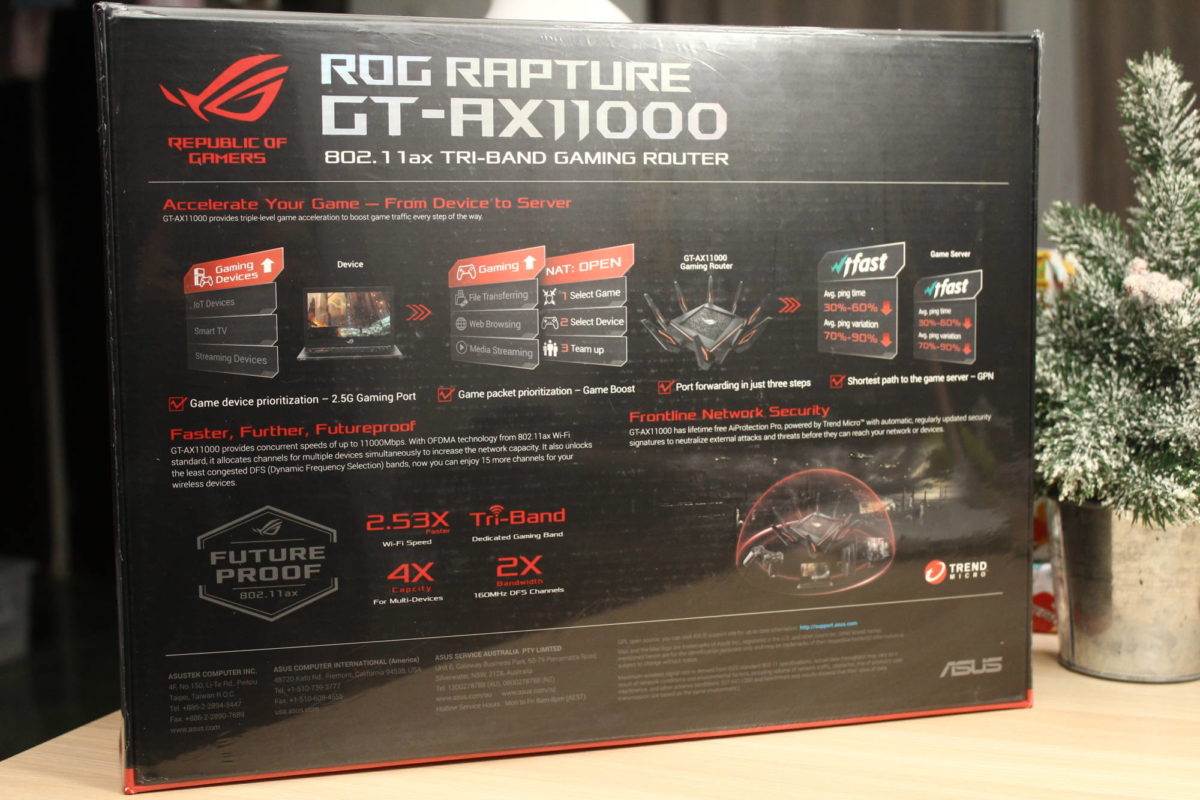
The back side highlights a number of features, performance claim, specification, certification, and many more.
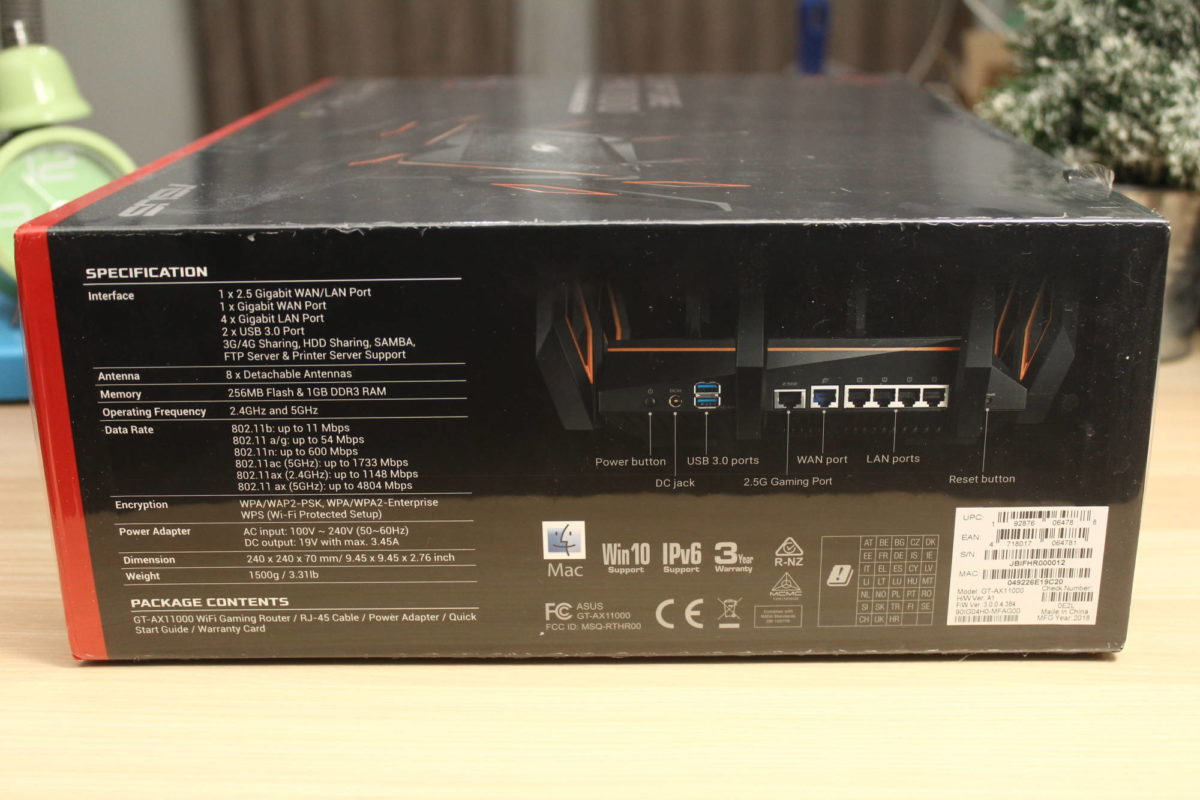
The right side of the box highlights a more detailed specification of the router. As well as some certification, product support, and serial number.
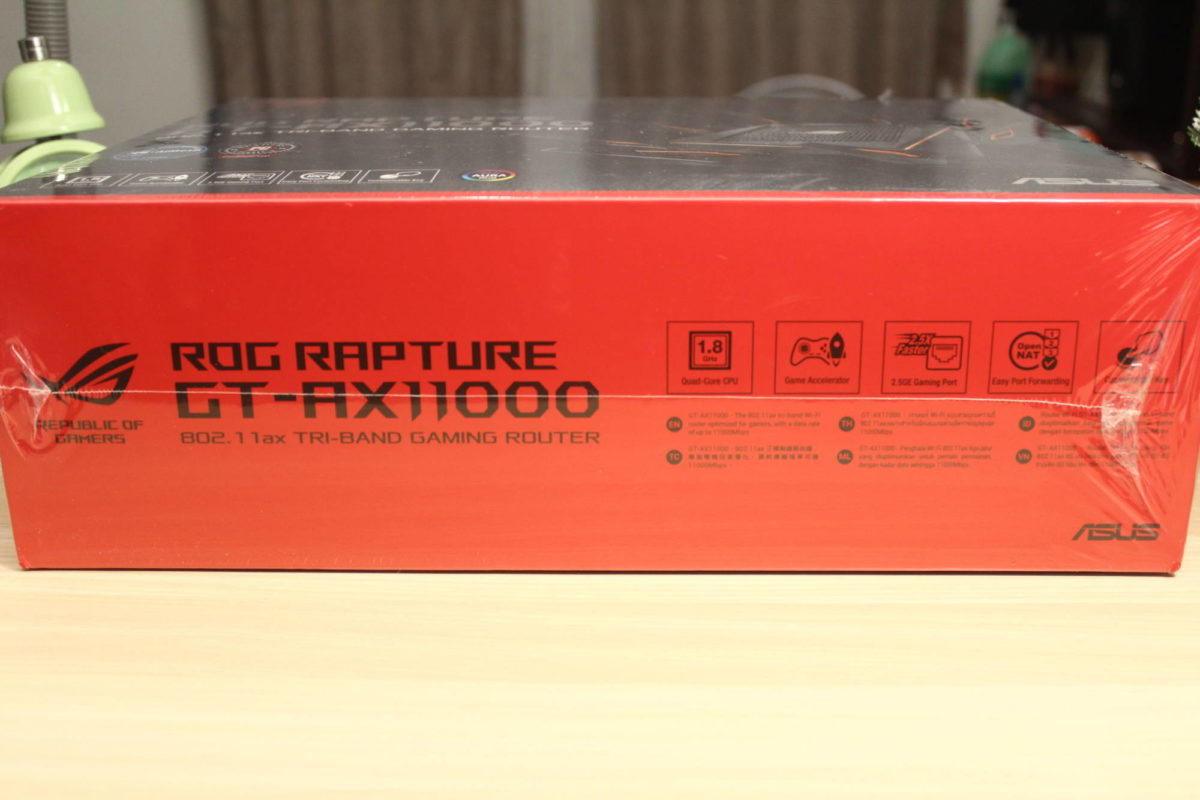
Lastly, the bottom side of the box highlights similar items that we have seen on the front side. The only difference is the detailed introduction of the routers key features. The other sides of the box that we did not mention doesn’t highlight any
Box Content
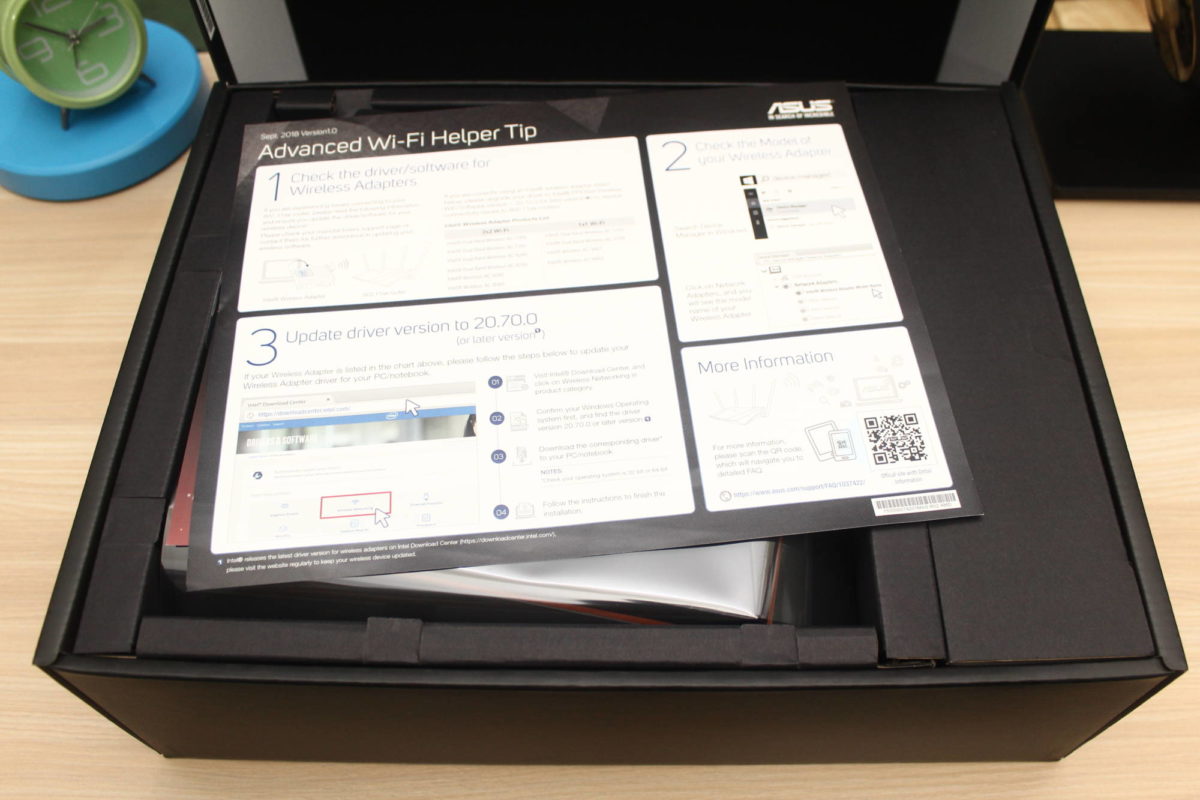
So opening the box was fairly simple. It’s worth mentioning that the box feels premium overall which is something that we expect. The top box has a soft foam cushioning that protects the content from minor damages during shipping or travel.
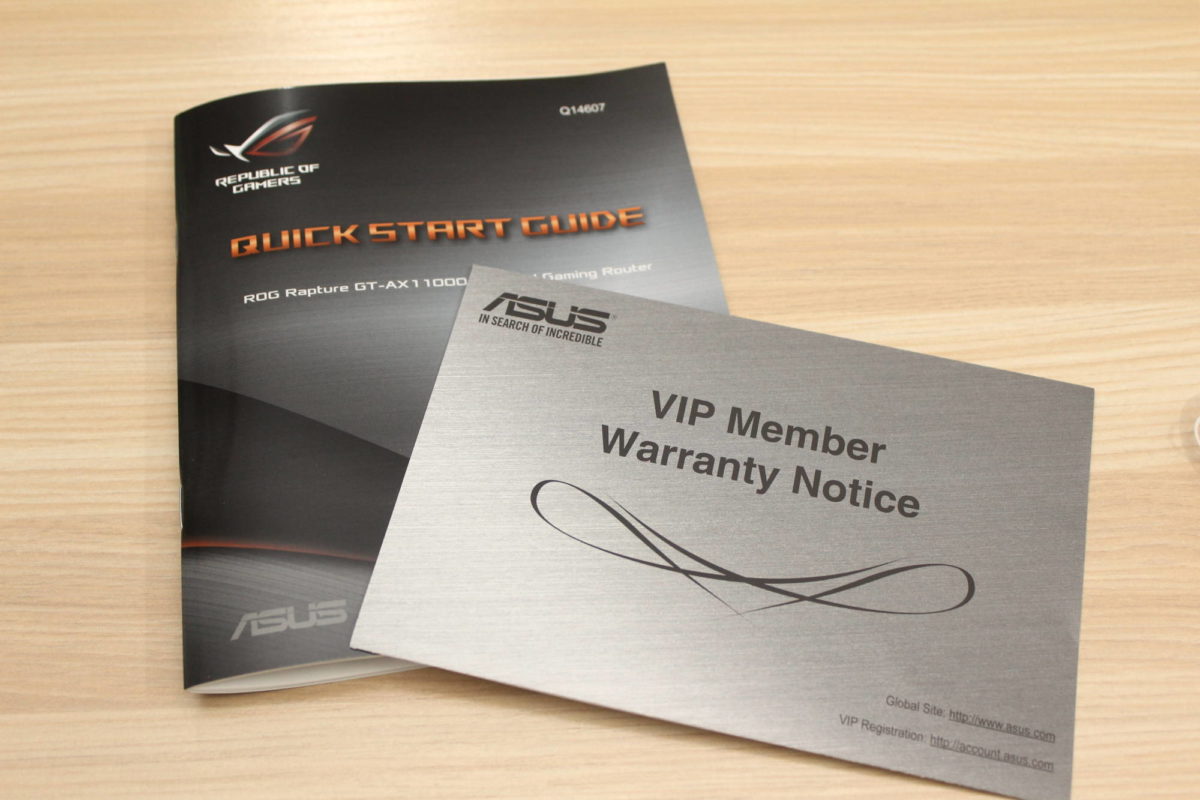
So the package comes a quick start guide, a warranty card, and helper tip.
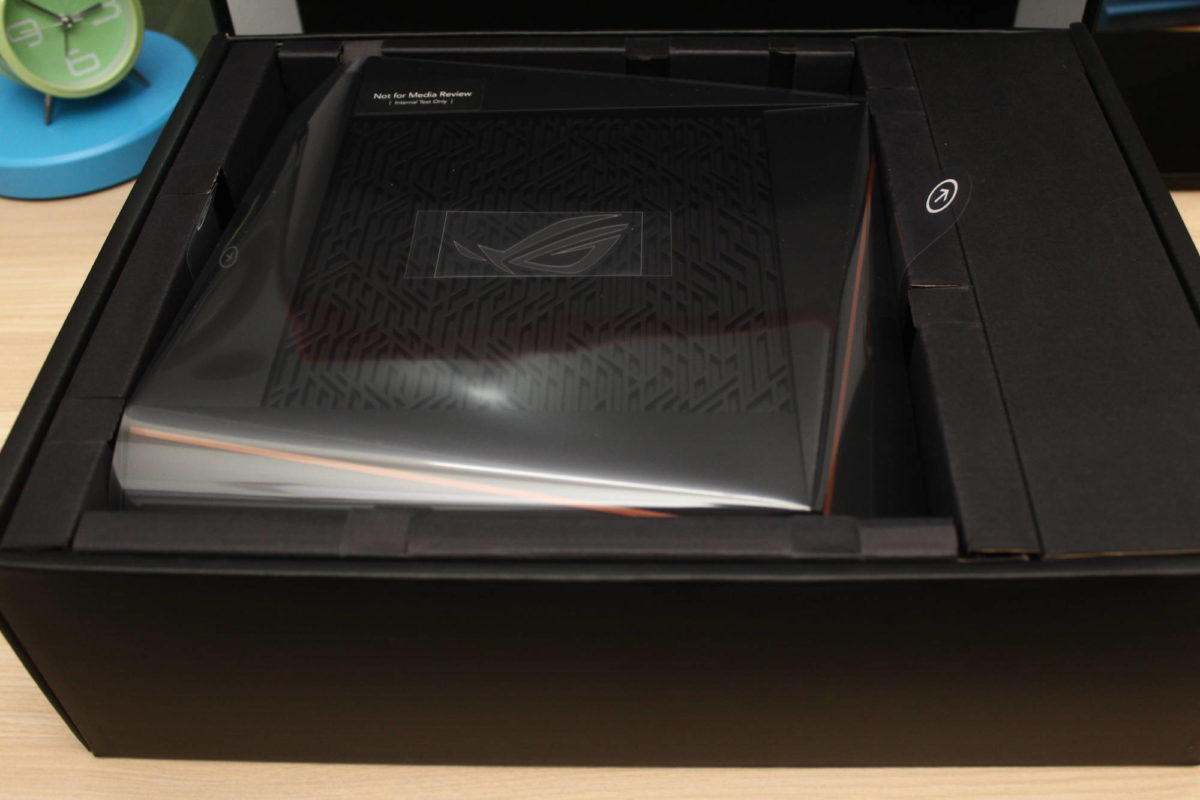
Taking all those out reveals the actual router itself. The router is wrapped around a hard plastic that’s easy to remove. This protects the router from trivial damages.
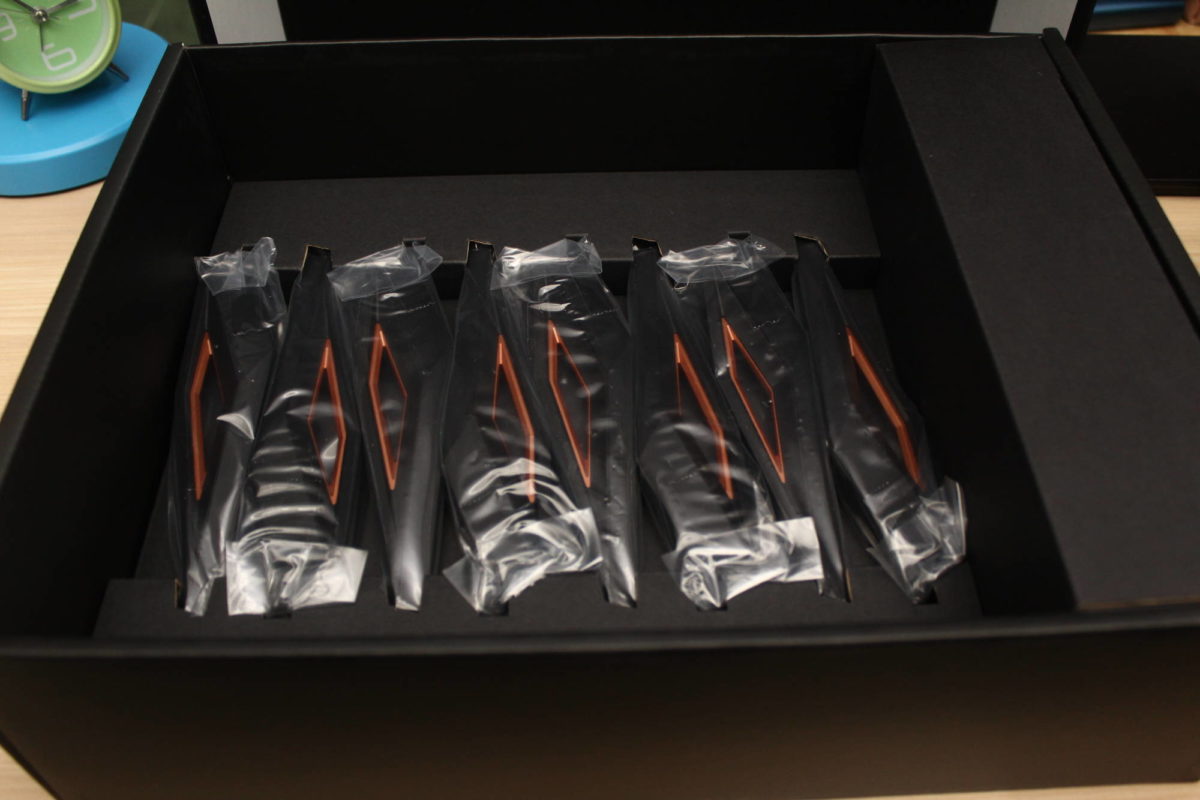
Taking the router out and the carton that holds it reveals the content underneath which are the eight (8) antennas. Each antenna is inside a plastic bag and is tightly held in place by their carton holder. Removing those will reveal a small compartment that contains the quick start guide and the warranty card.
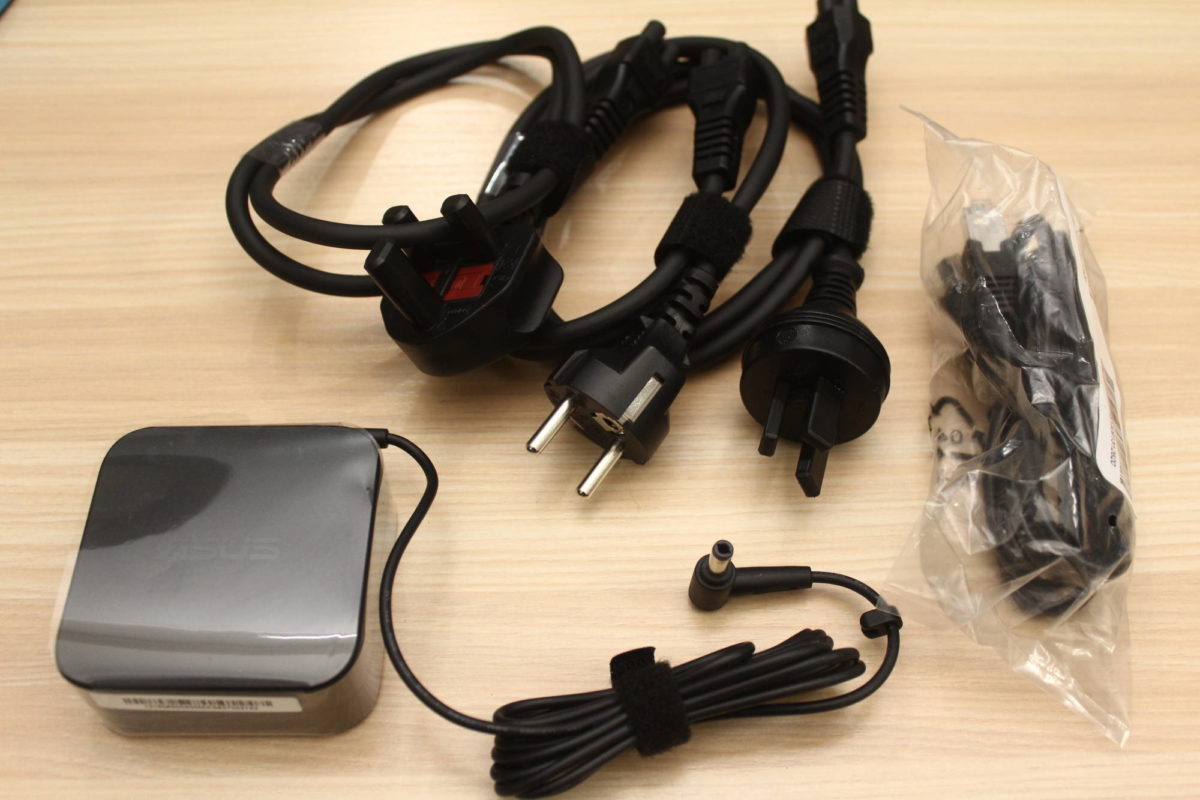
Lastly, the box comes with one power adapter, one Cat5E RJ45 Ethernet cable, and three (3) different wall power plug which are Type G, Type F and
Assembly
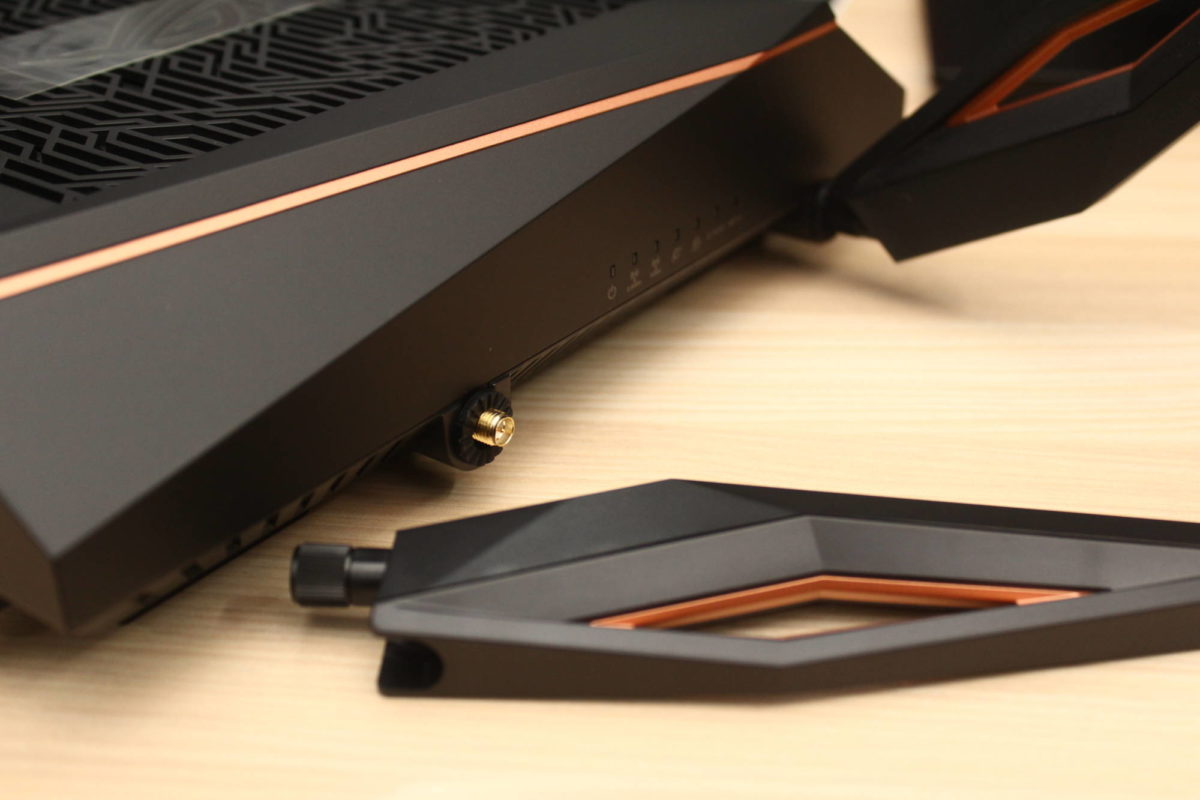
The ASUS ROG Rapture GT-AX11000 is fairly easy to assemble. Each antenna has a single male RPSMA connector. Connect these connectors to the female RPSMA of the router. Anywhere is fine, it doesn’t have any indication where one should go. Just make sure that they are tightly connected.
Closer Look – ASUS ROG Rapture GT-AX11000

Once all antennas are connected, it should look like the above image. Now, let’s take a closer look at this router. This is a simple tour of what does what and where goes where.
First off, the ASUS ROG Rapture GT-AX11000 exhibits a similar design to its predecessor, the ASUS RT-AC5300. Its another gaming oriented tri-band router.
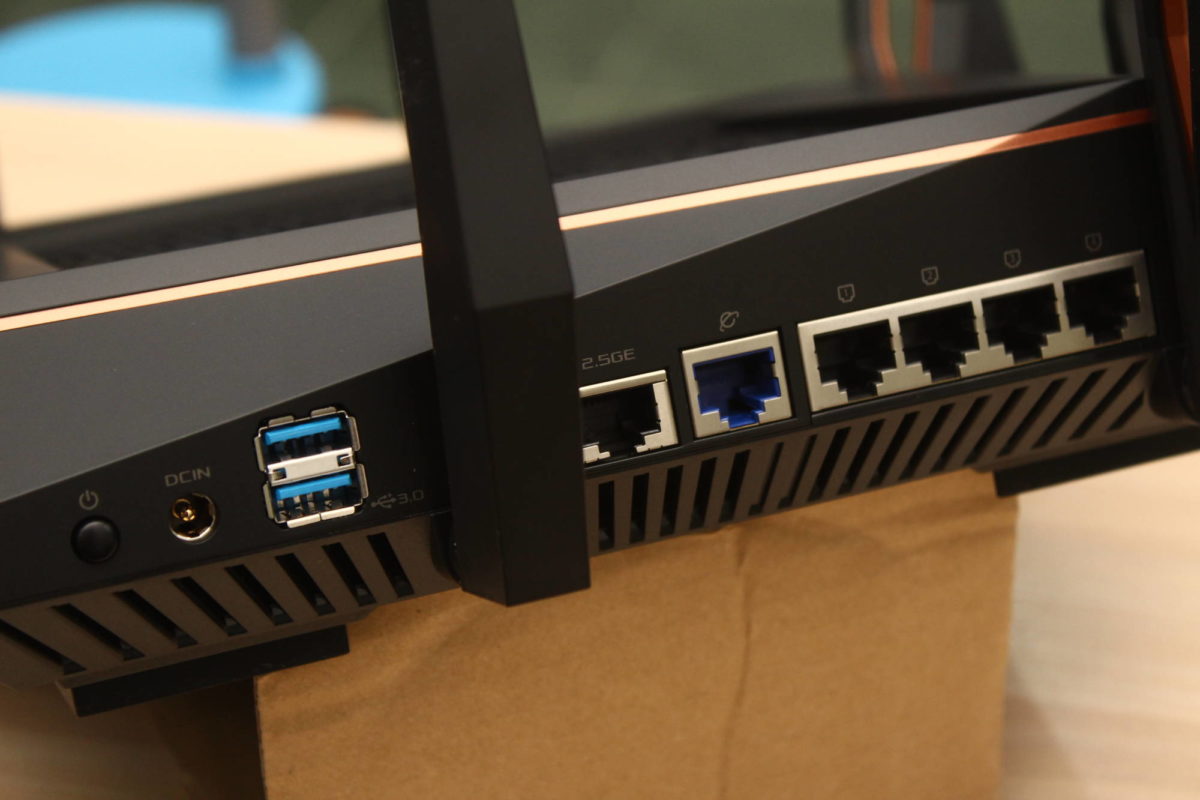
Checking out the I/O side, the ASUS ROG Rapture GT-AX11000 features four (4) Gigabit RJ45 LAN Ethernet port, One (1) Gigabit RJ45 WAN Ethernet port, One (1) 2.5GE RJ45 Ethernet port for gaming, two (2) USB 3.0 ports, one (1) DCIN power port, and one (1) power switch.
Specification wise, the 2.5GE port is capable of providing 2.5Gbits/s of data transfer rate. Which is 2.5 times faster than a Gigabit connection.
The two (2) USB ports are USB 3.1 Gen 1 and they are capable of providing 5Gbps of data bandwidth. Such bandwidth is actually just right for any external hard drive. So you can attach your external HDD to your local area network without any performance bottleneck. You can also attach your local area network with USB flash drives and printers too using these USB ports.
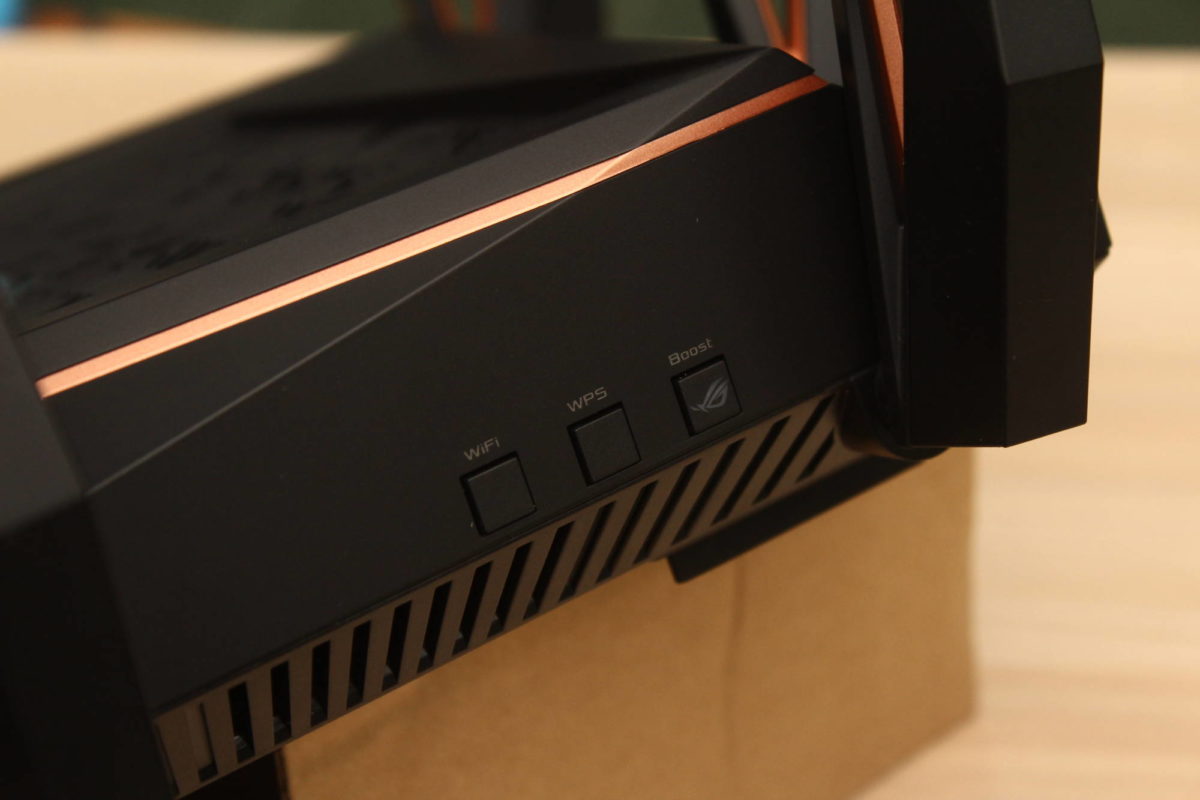
The ASUS ROG Rapture GT-AX11000 also features three (3) easy to access control buttons for WiFi, WPS, and Boost.
The button with the ROG logo and “Boost” label is a dedicated “Game Boost” button. It simply toggles the Game Boost mode.
Game Boost mode prioritizes gaming traffic on the network without the need to change the router’s settings on the web interface. Furthermore, it also enables the Dynamic Frequent Selection (DFS). DFS makes the router select the least congested wireless channel for optimal performance.
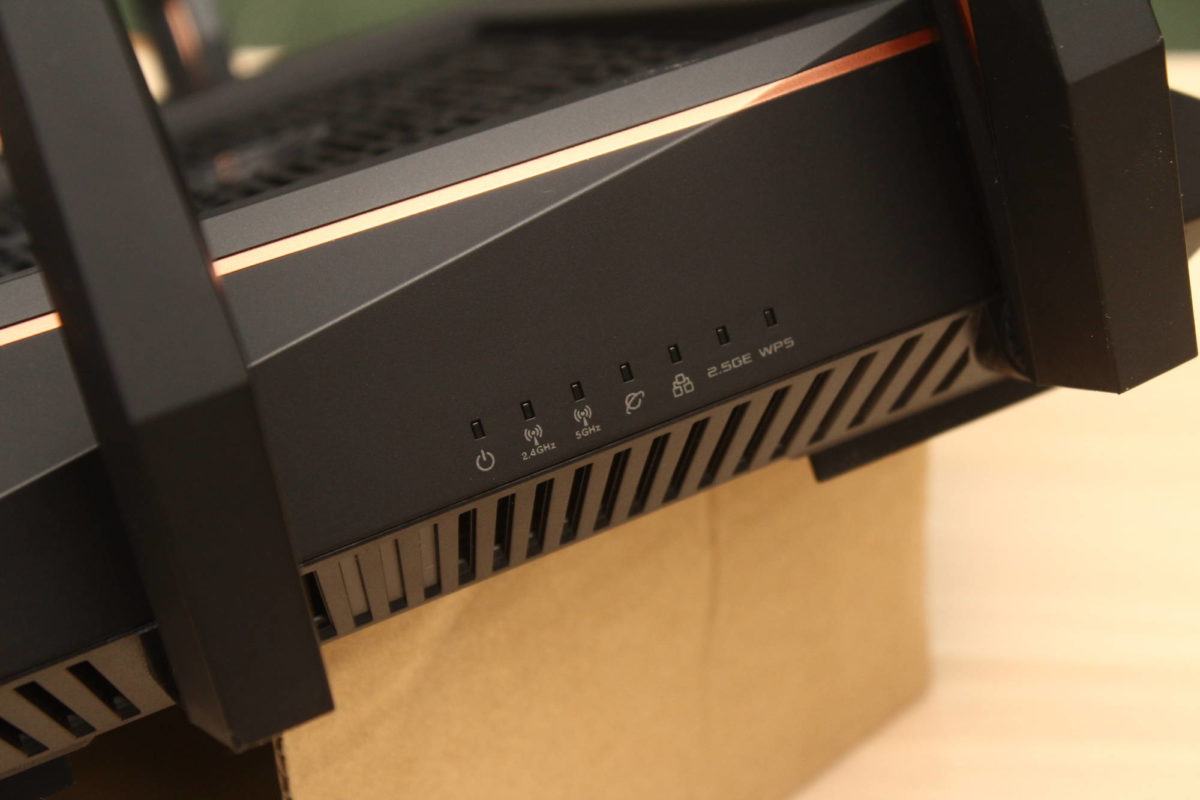
On this side of the router is the LED indicator. The first one starting from the left is the power LED indicator, followed by the 2.4GHz indicator, and then the 5GHz indicator.
Next is for the internet. If the LED for the internet is RED, that means there’s a connection but there’s no internet connection. If the connection to the internet is stable, the colour will be WHITE.
The next one is the LAN, followed by the 2.5G Gaming port LED indicator, and last is the WPS LED indicator.
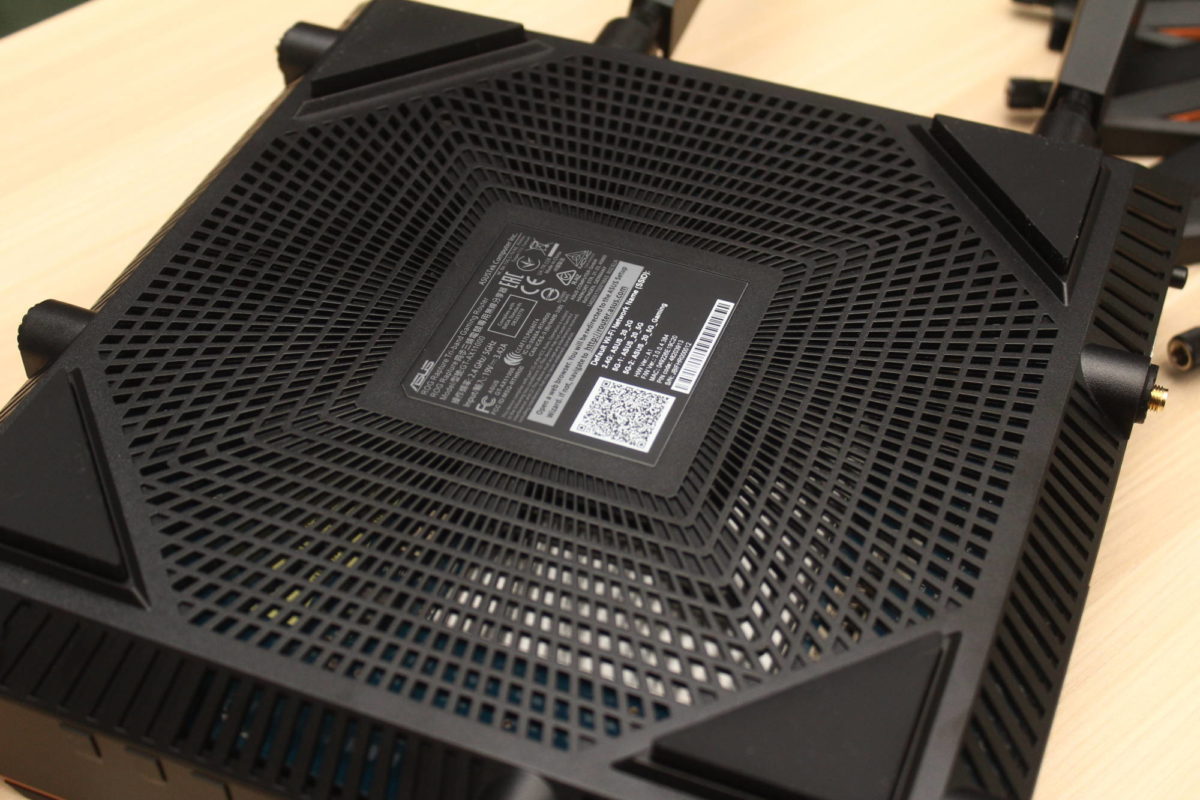
Looking at the bottom side of the router reveals its mesh like design for better passive hardware cooling. It also has a sticker at the center that highlights various information about the router such as the default SSID names, input output power, certifications, and many more.
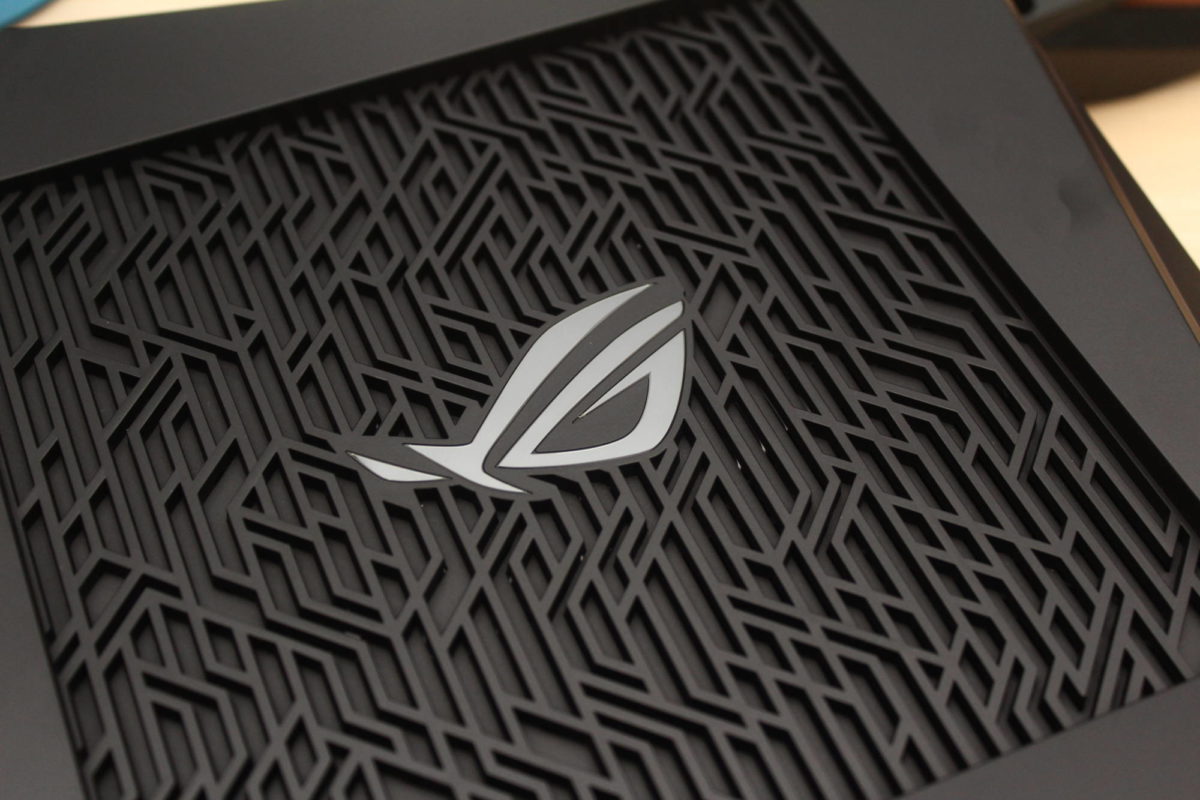
And last but definitely not the least is the ROG logo located at the
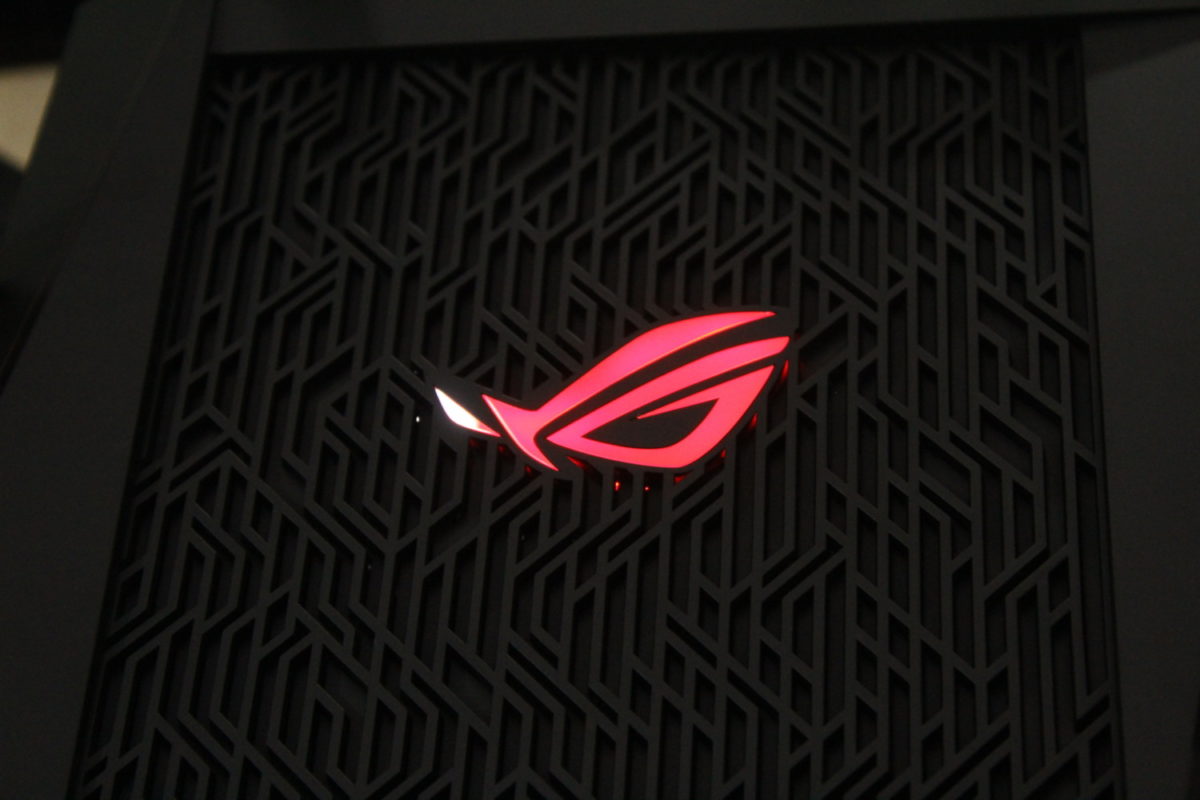
You can fully customize the animation, colour, and settings via the web interface.
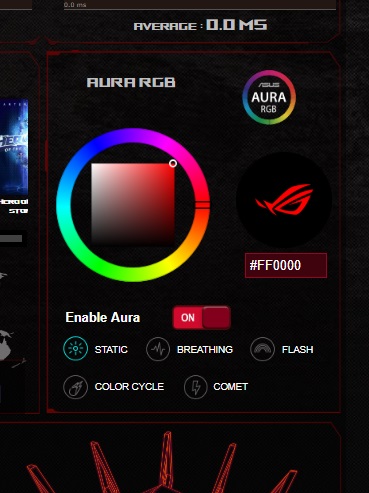
The overall physical aesthetics and design of the router is appealing and definitely an eye-candy but it raises a few concerns for some. One might find that the maze-like design at the center is stylish but for us, we see it as a dust harbourer. It’s going to be difficult to clean that once the router gets dirty and dusty.
User Web Interface
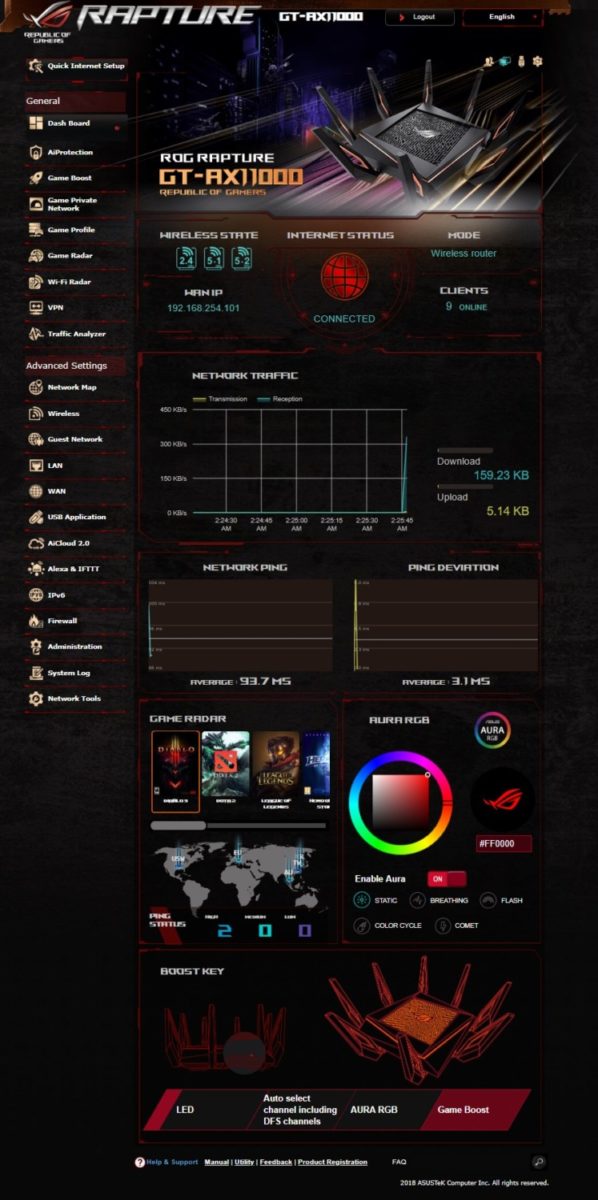
In this section, we will show you the user interface of the routers web platform options. You might see some whiteouts on some image since we had to cover some sensitive information.
AiProtection
AiProtection is a built-in security feature of the router that blocks any forms of malware or viruses that can intrude and cause harm to all the devices that’s connected to the router.
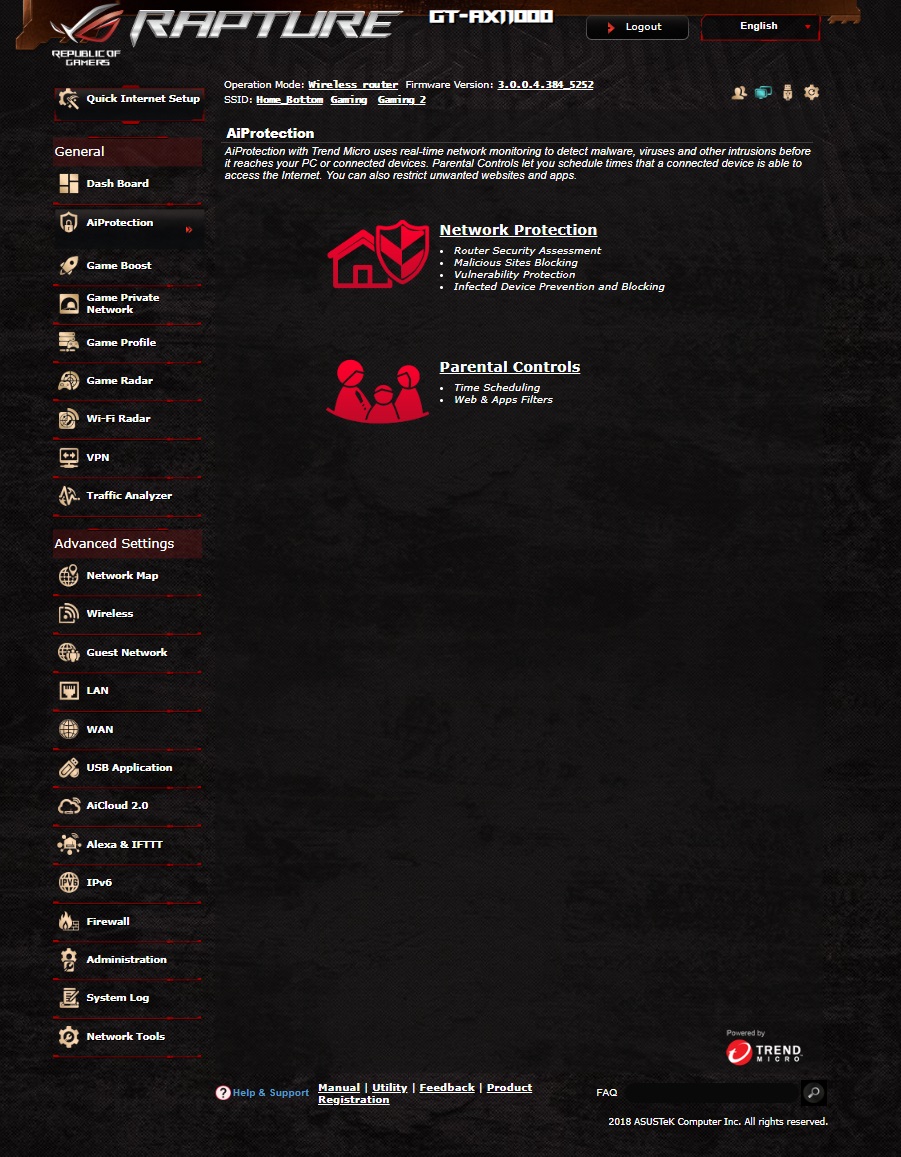
Simply speaking, this is an extra layer of protection for your devices. It acts as an anti-virus, firewall, anti-malware, etc… that protects all devices that are connected to the router. It’s like an extra anti-virus for your computer and other devices.
Game Boost
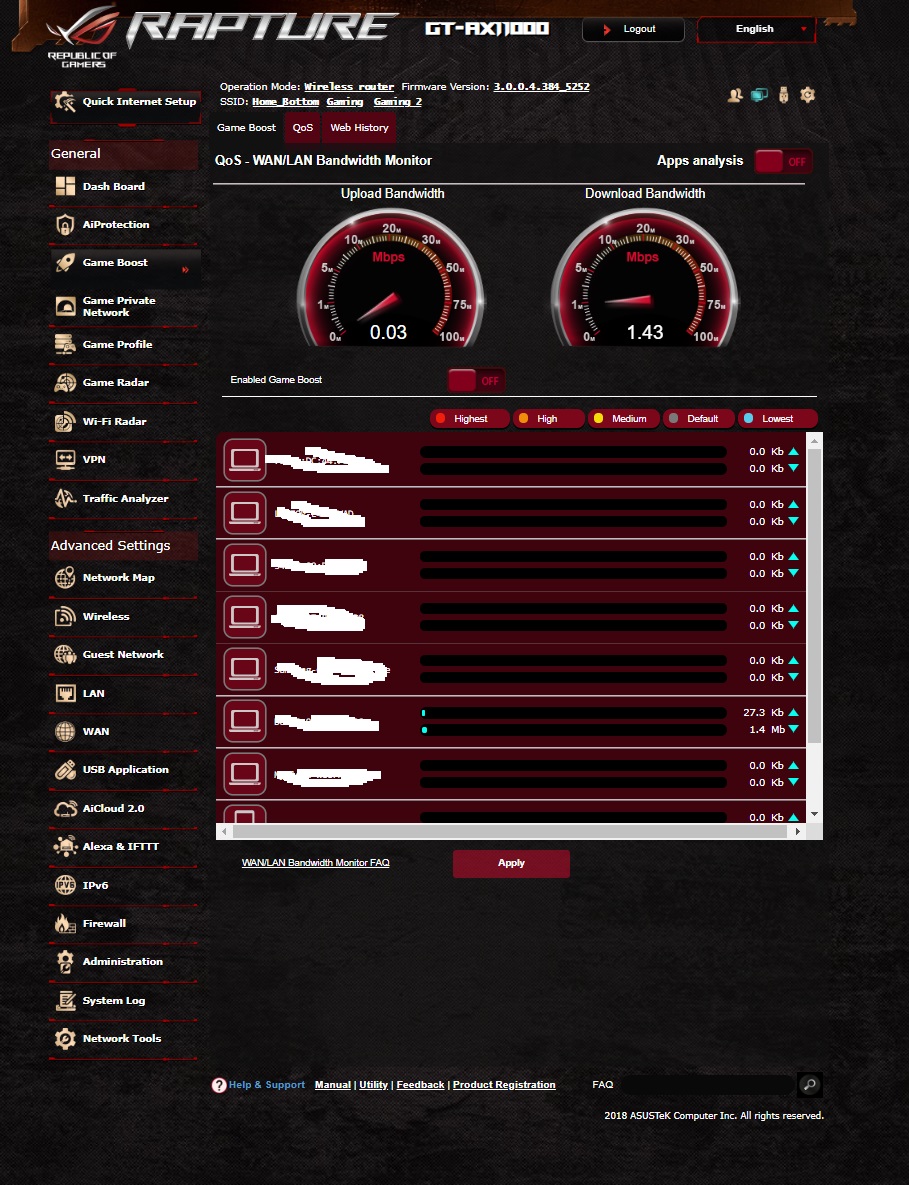
Gaming Private Network
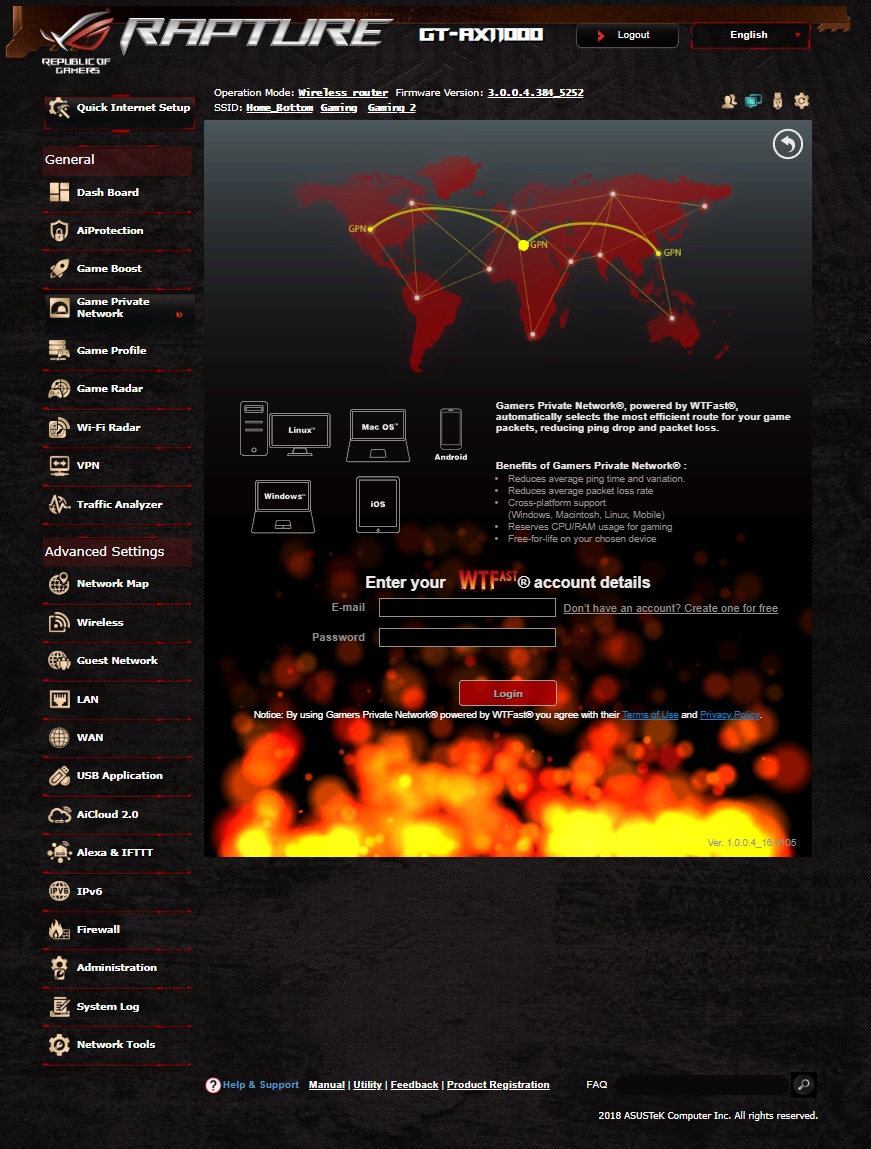
Game Profile
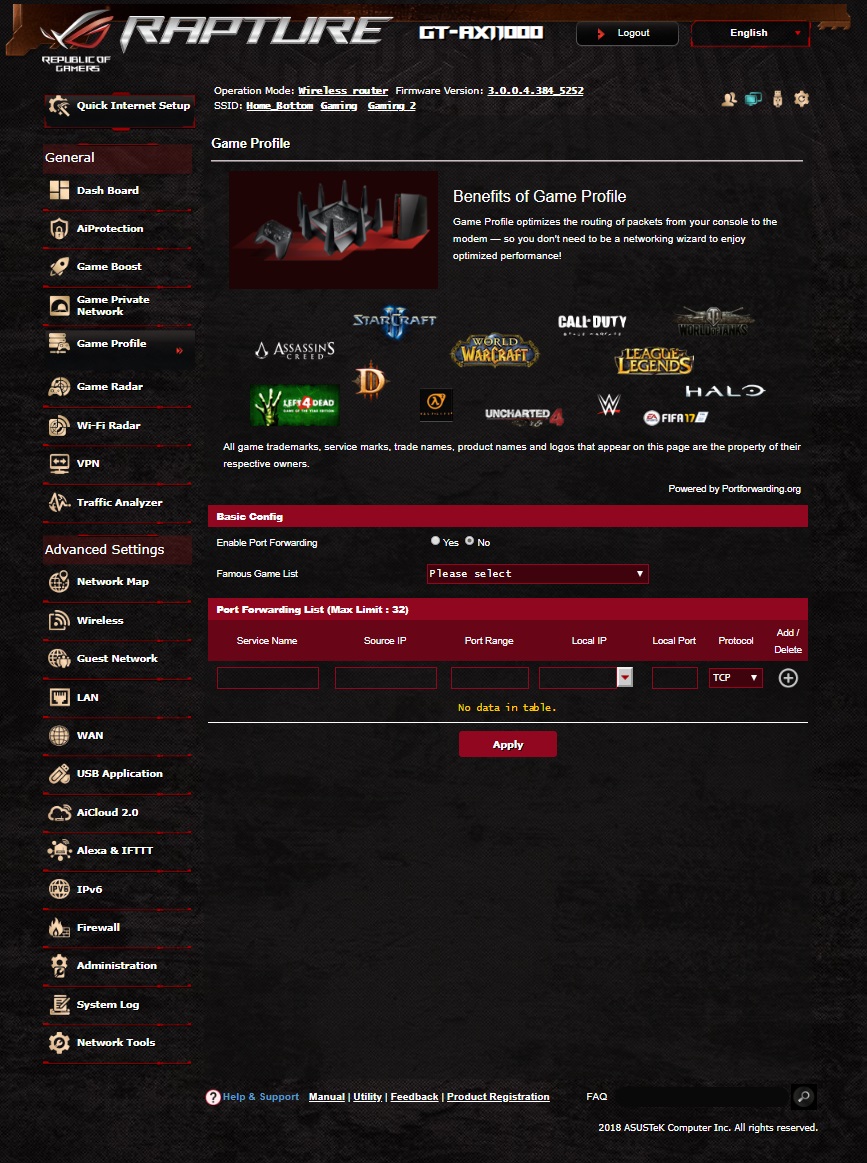
Game Radar
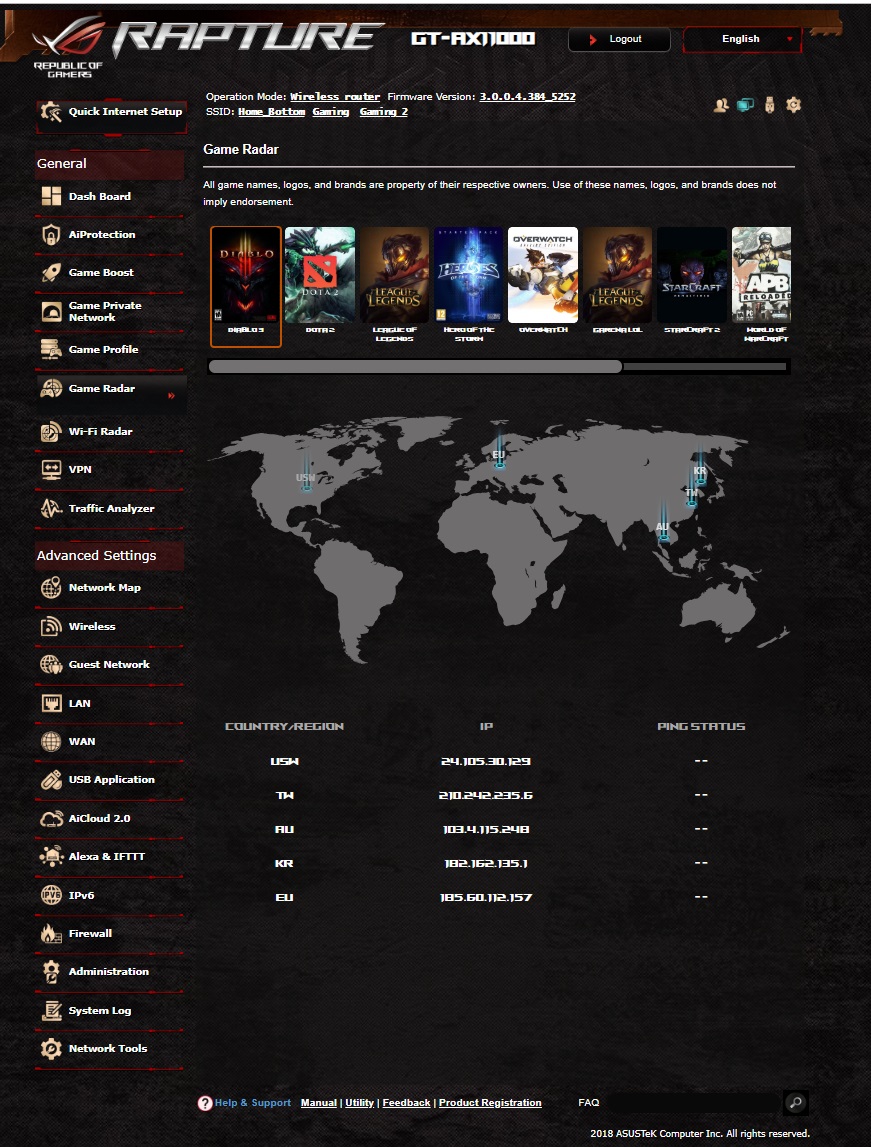
Wi-Fi Radar
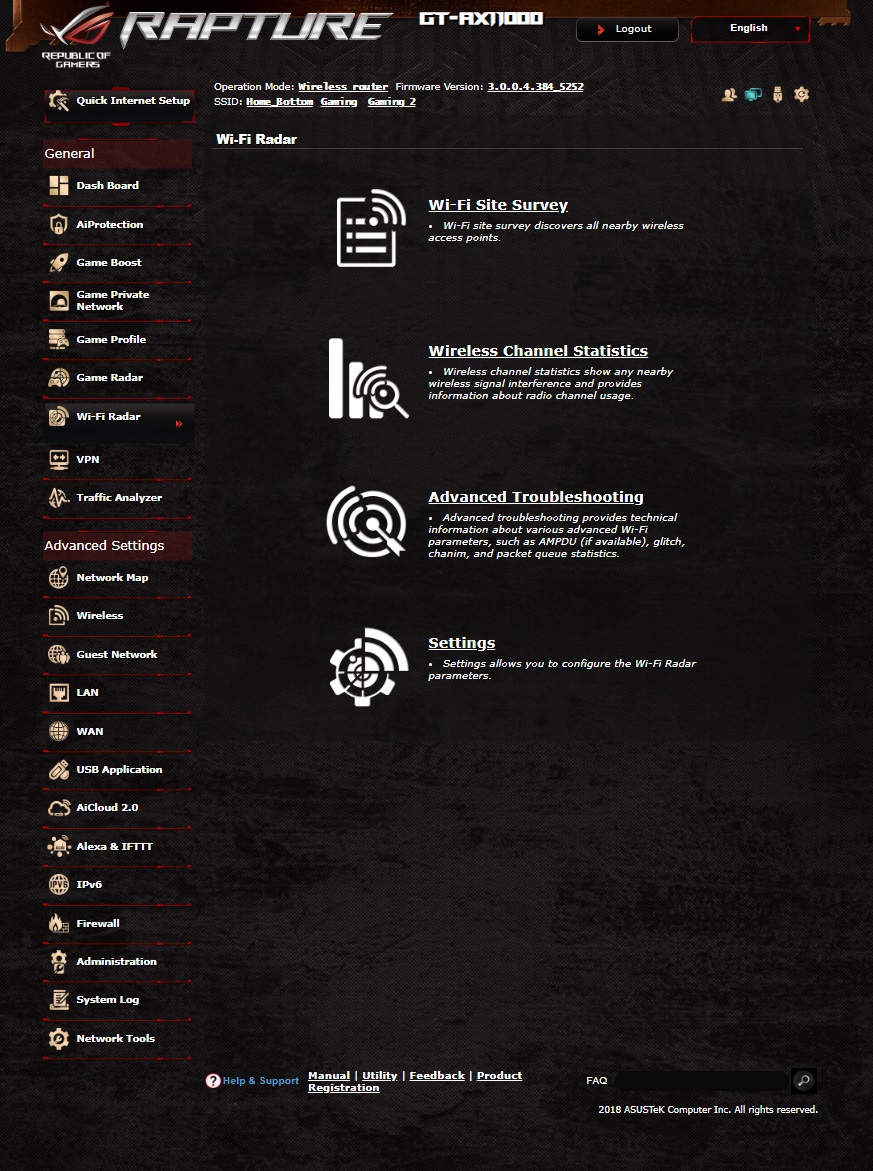
VPN
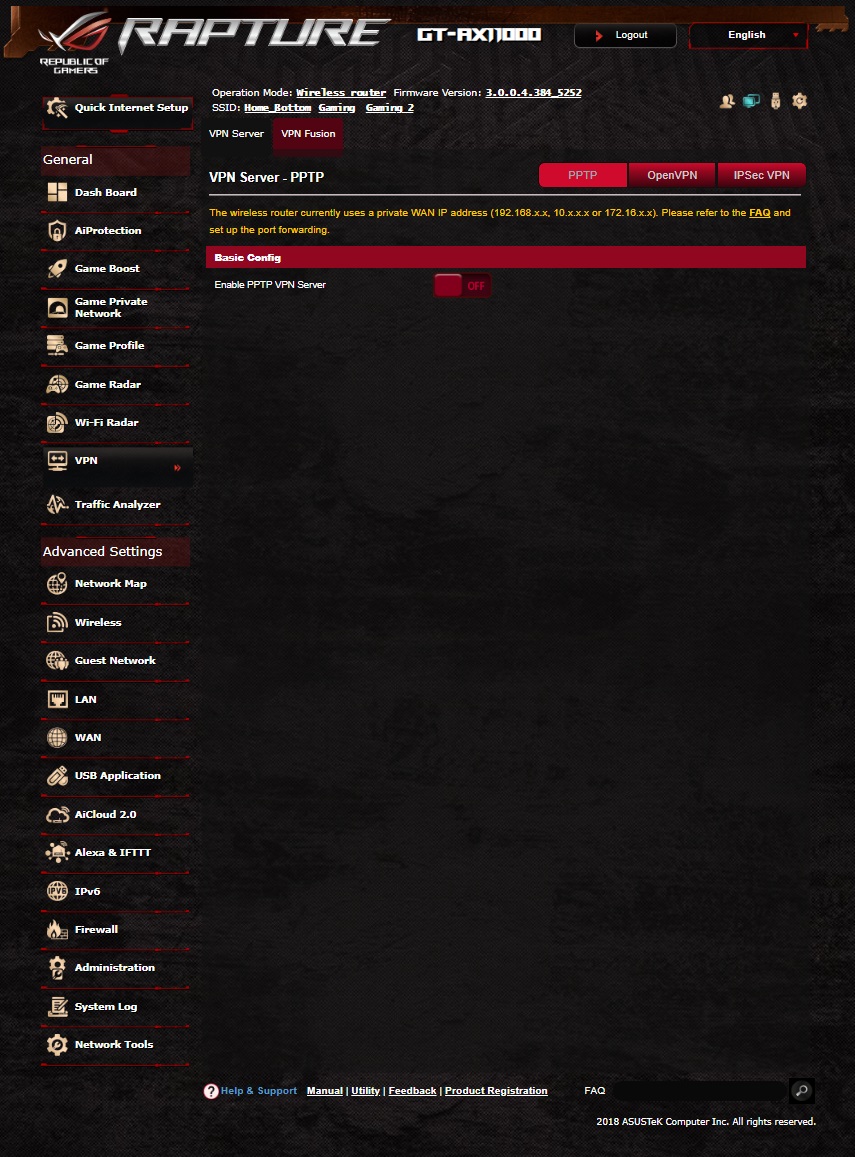
Traffic Analyzer
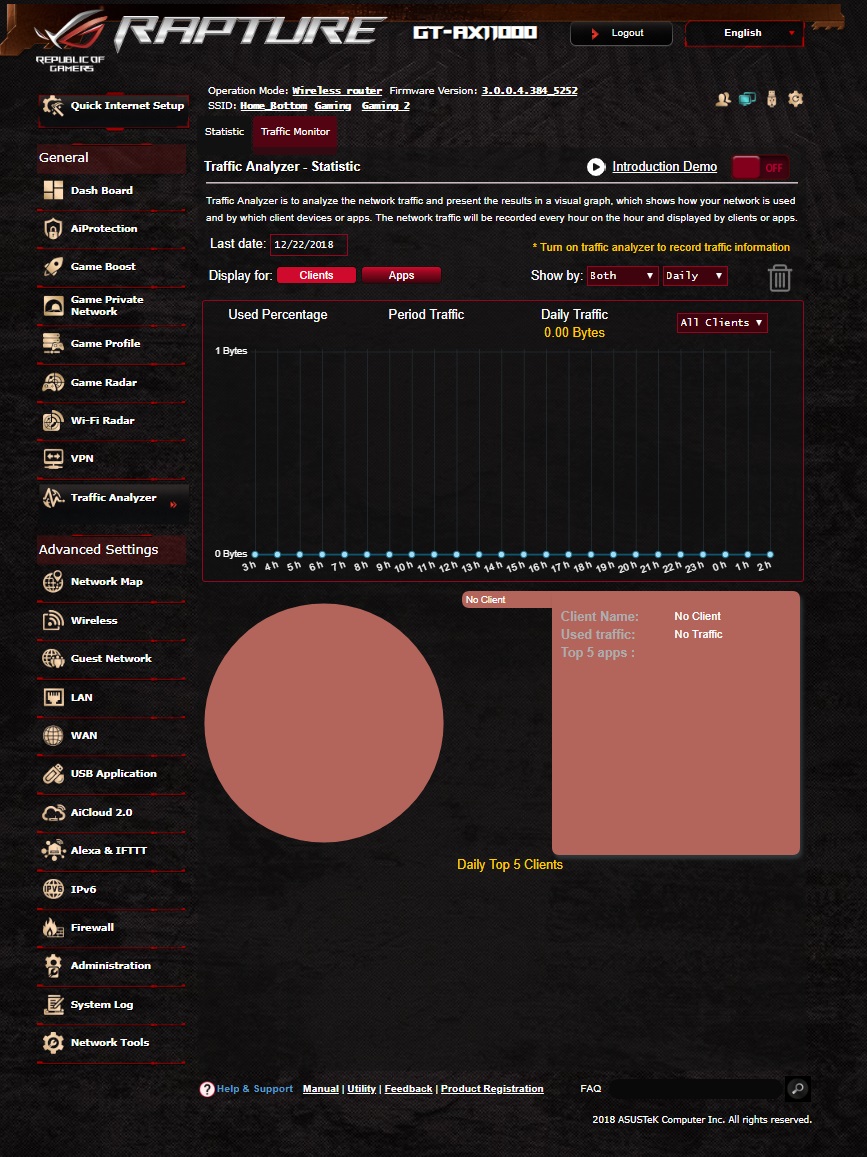
Advance Settings
Network Map
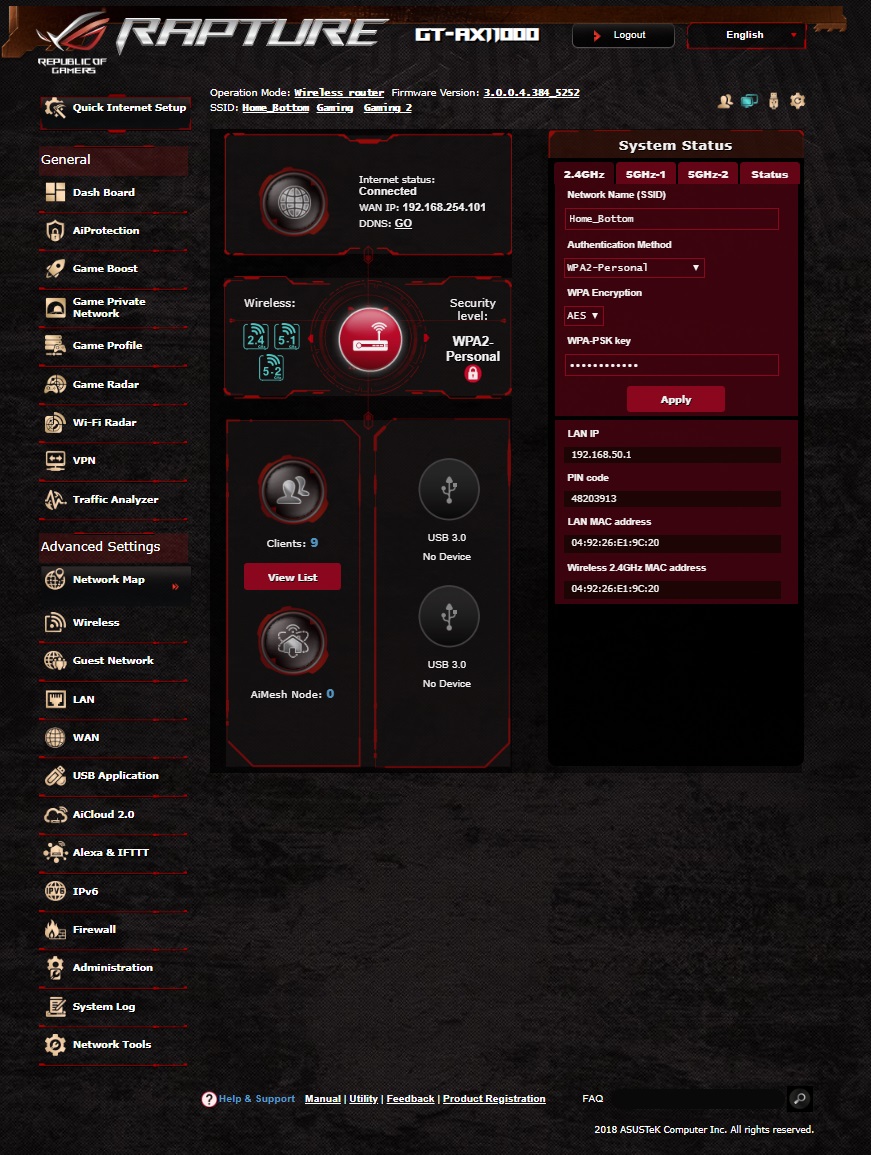
Wireless
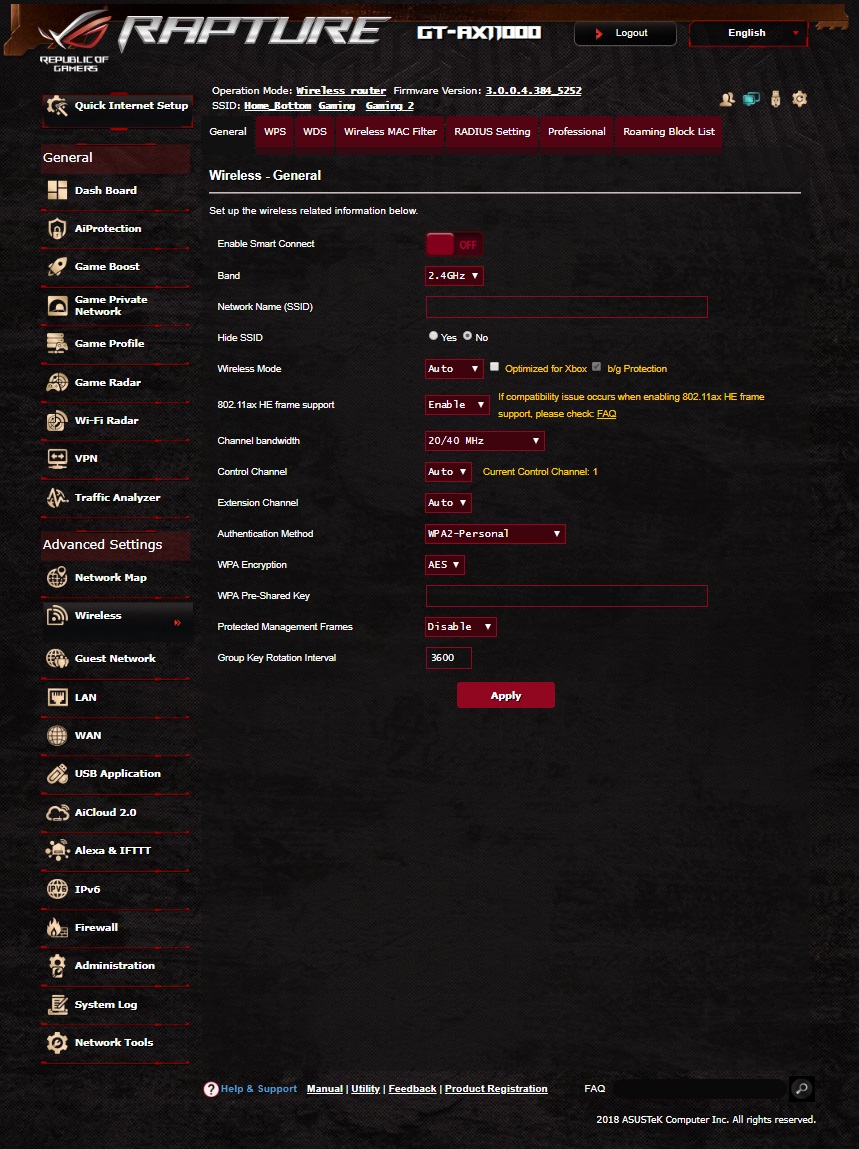
Guest Network
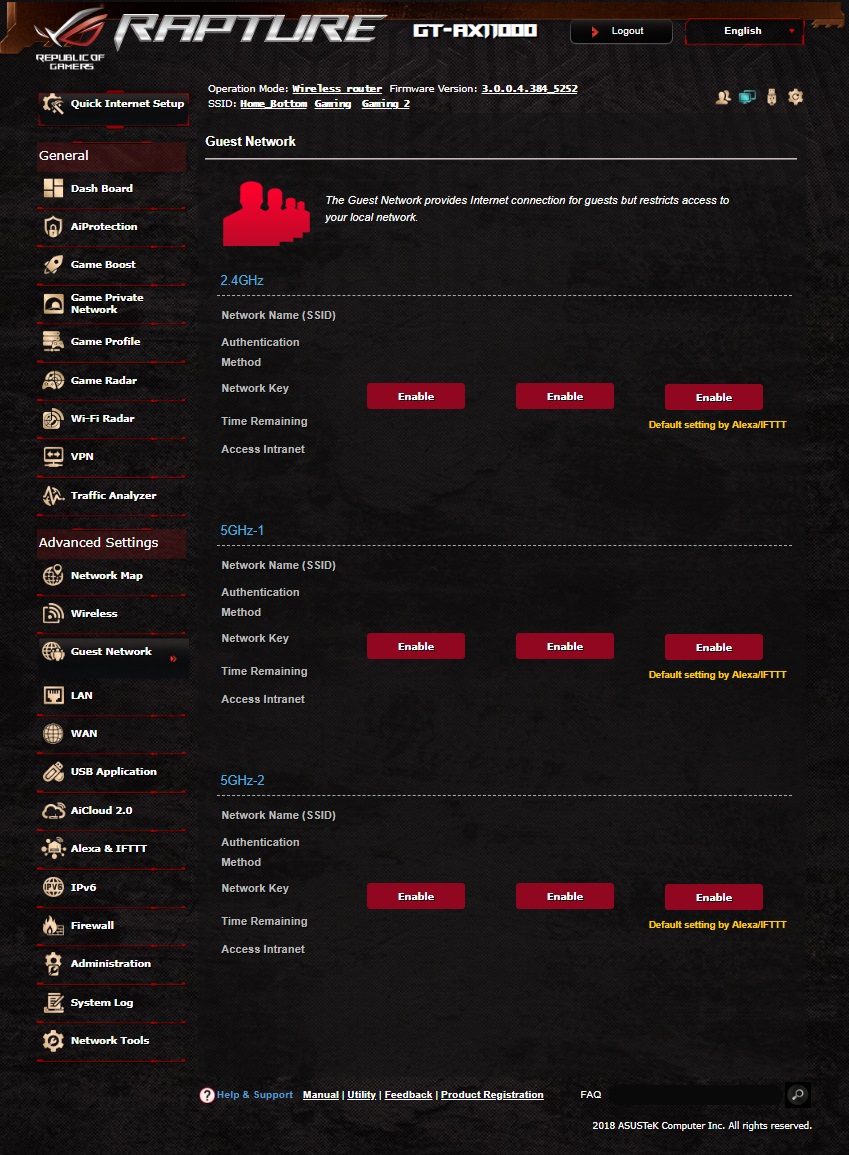
LAN
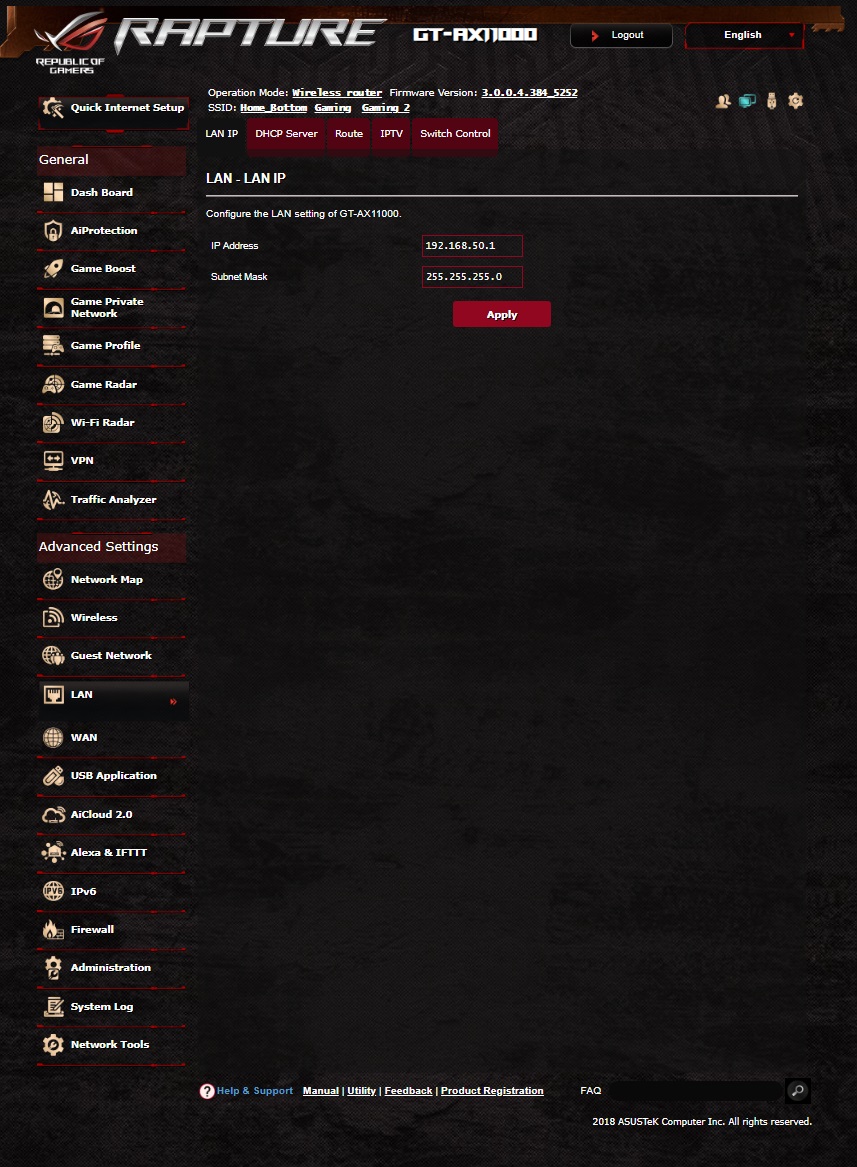
WAN
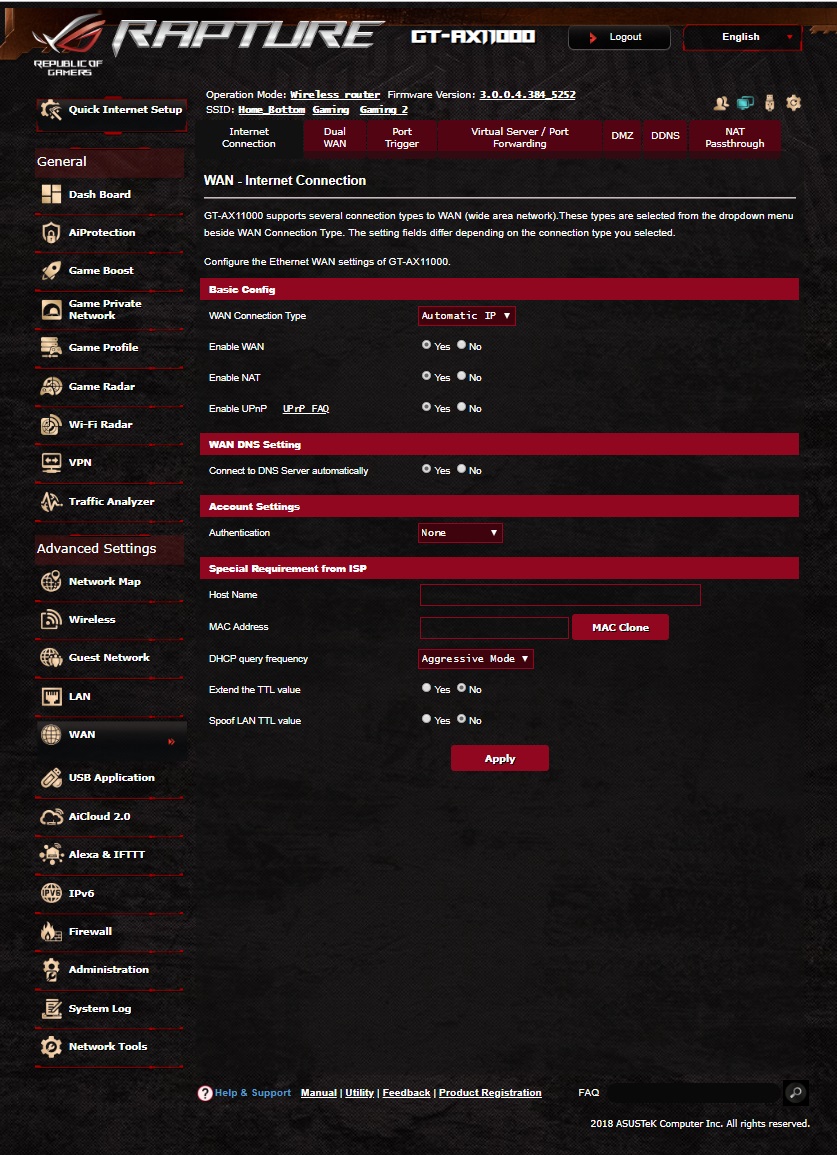
USB Application
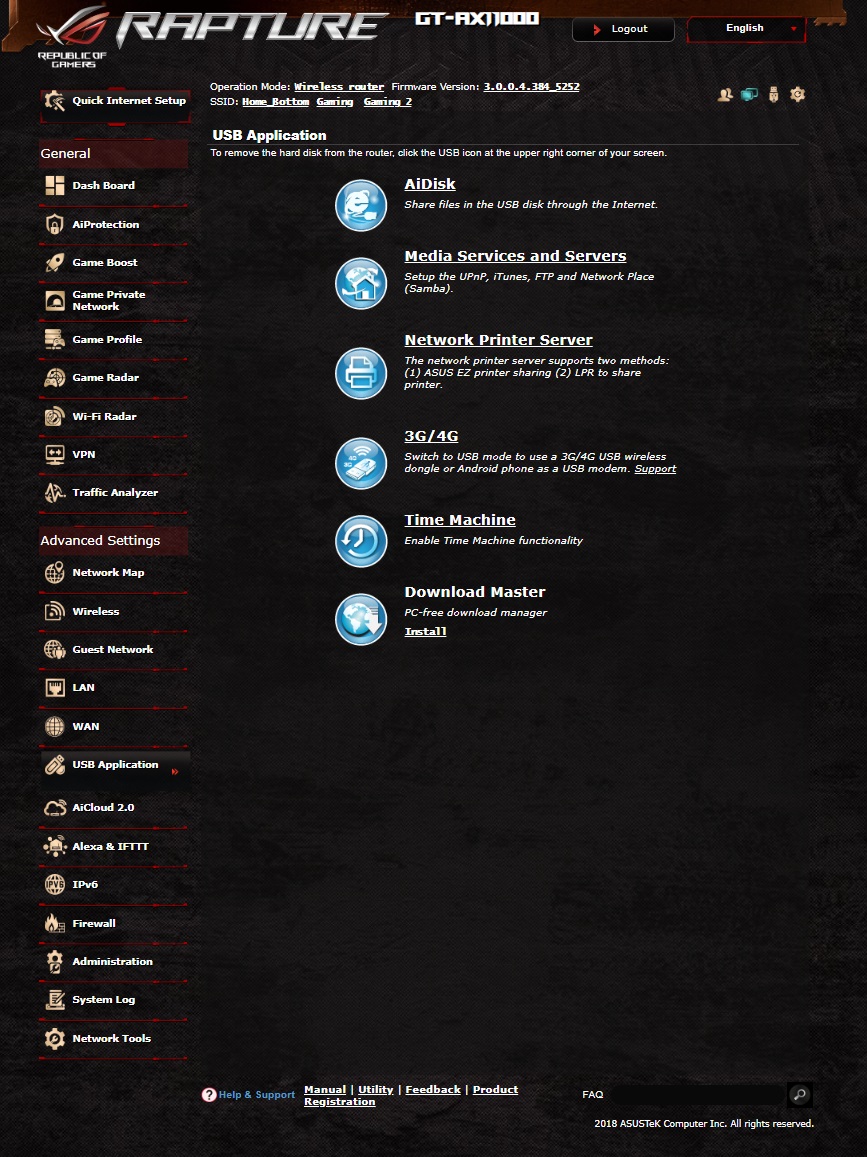
AiCloud 2.0
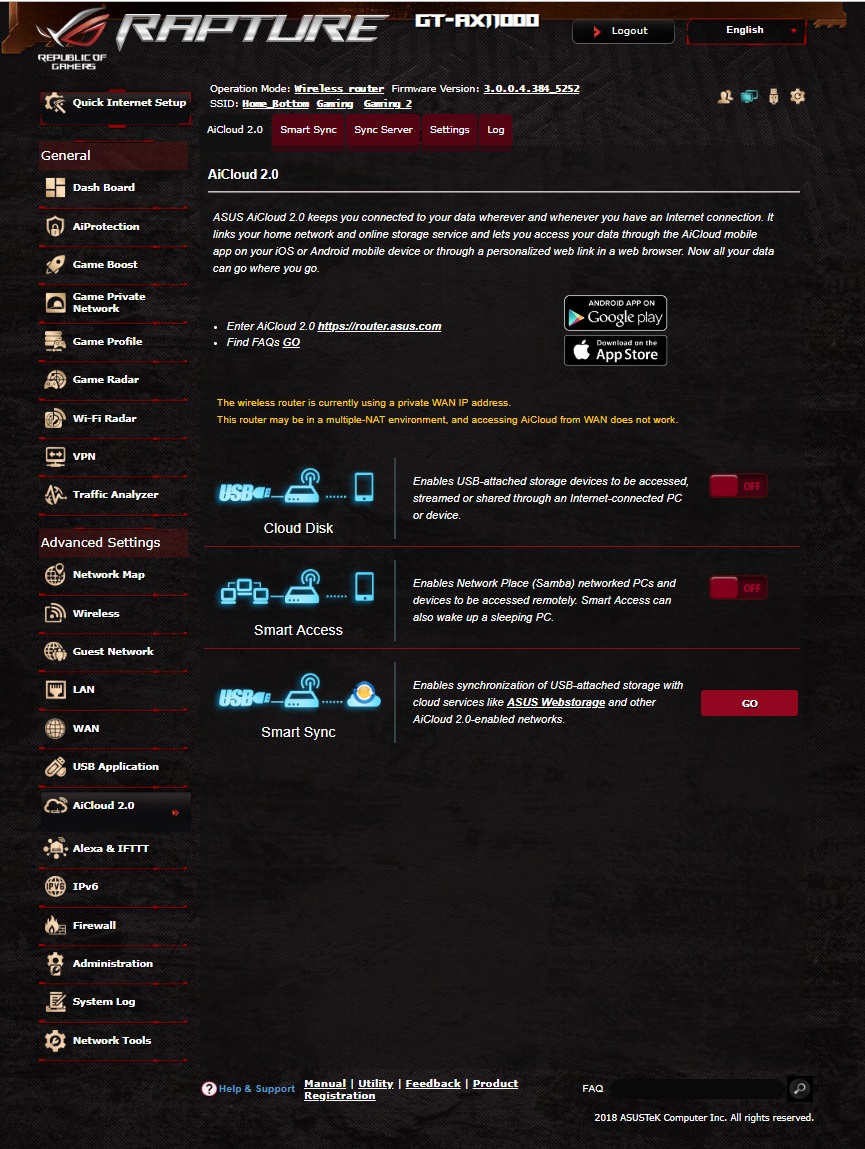
Alexa & IFTTT
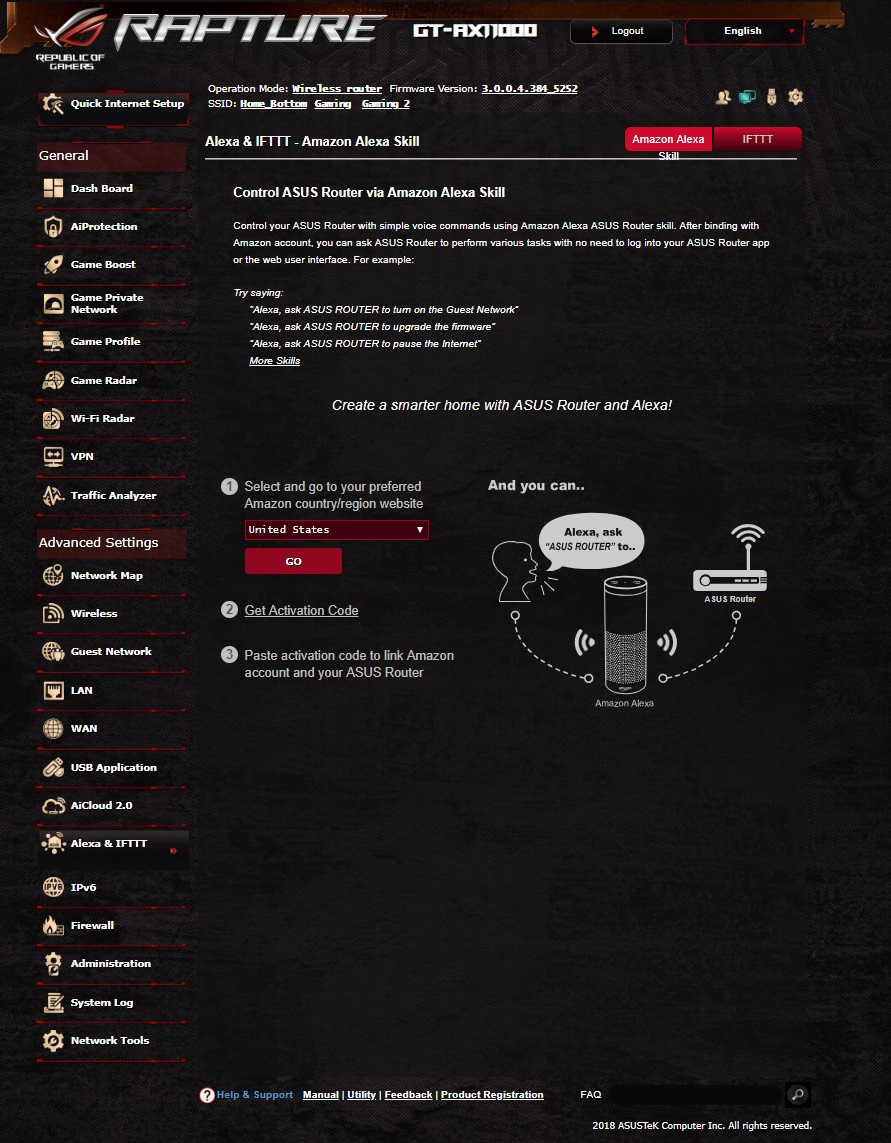
IPv6
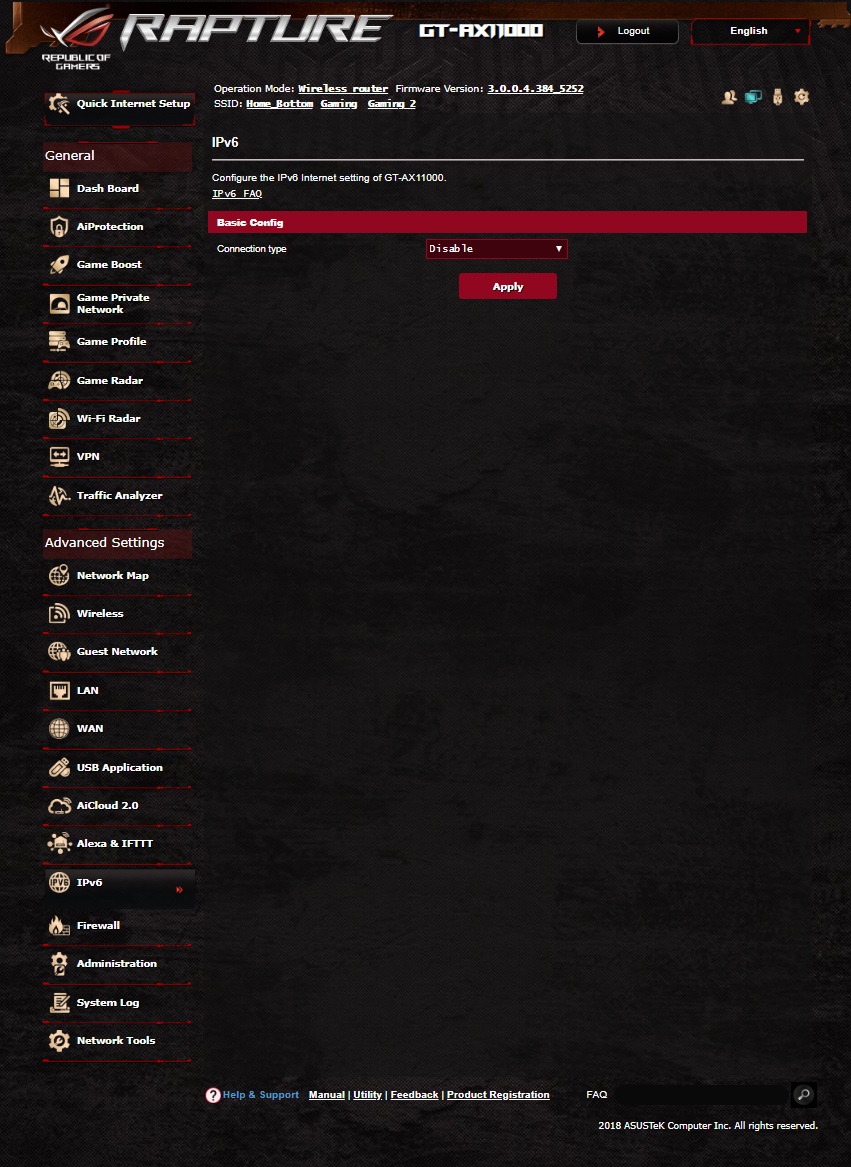
Firewall
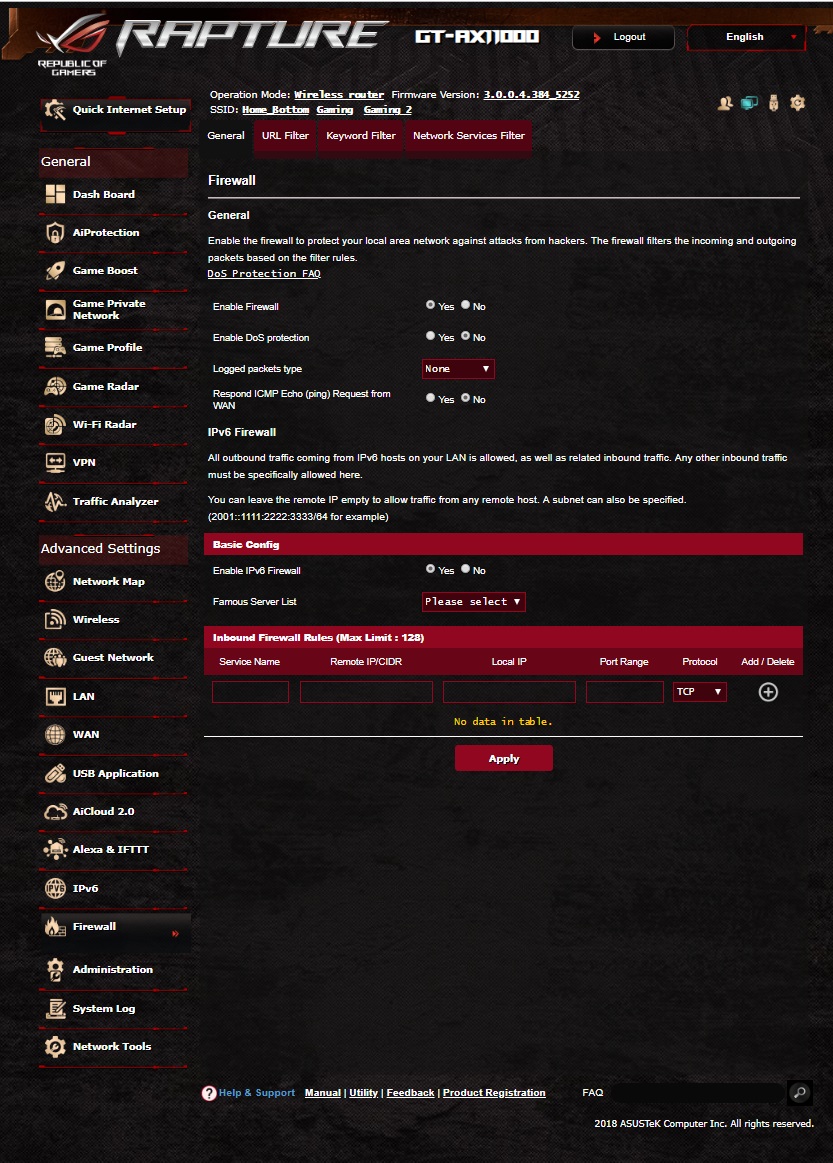
Administration
Under this settings, you configure the router to different kind of operating modes. One mode in particular is the AiMesh.
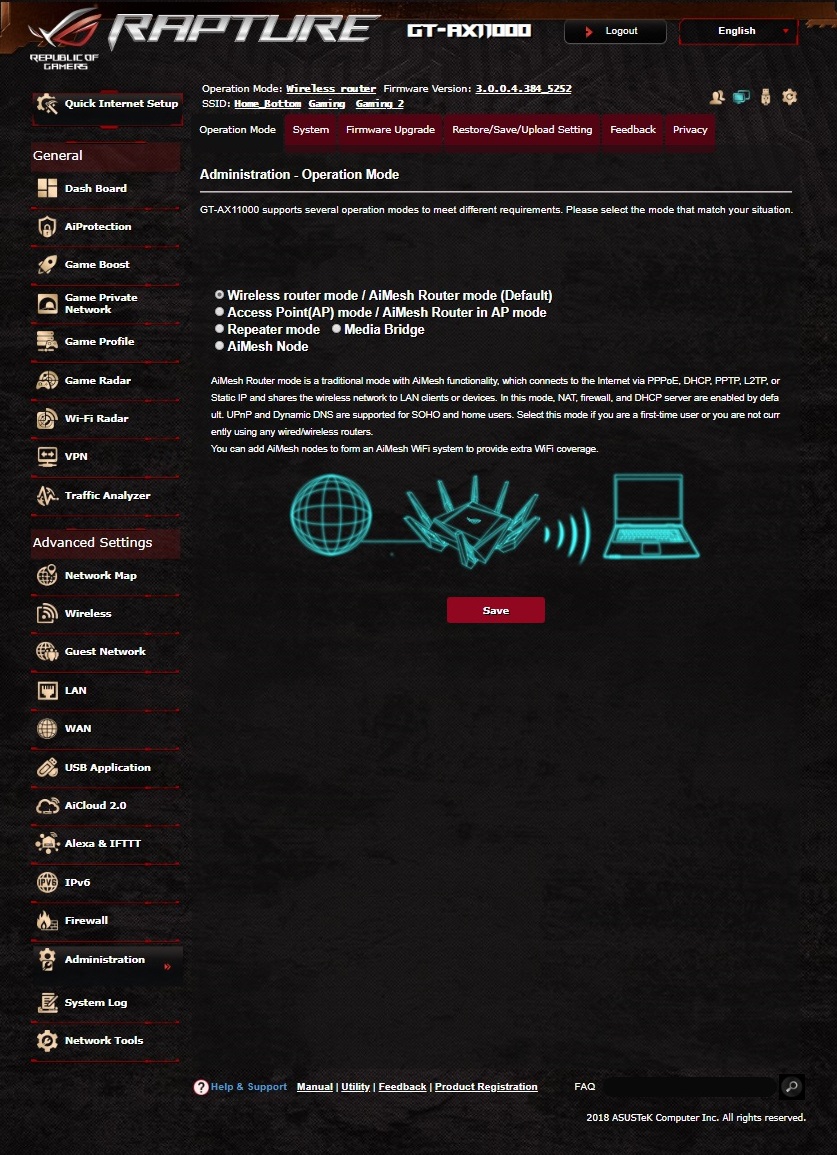
Unlike other AiMesh that requires you to purchase a bundle of identical routers, the ASUS AiMesh eco-system doesn’t require you to do that. With ASUS AiMesh, you can connect multiple different ASUS routers to create a bigger and wider home Wi-Fi network.
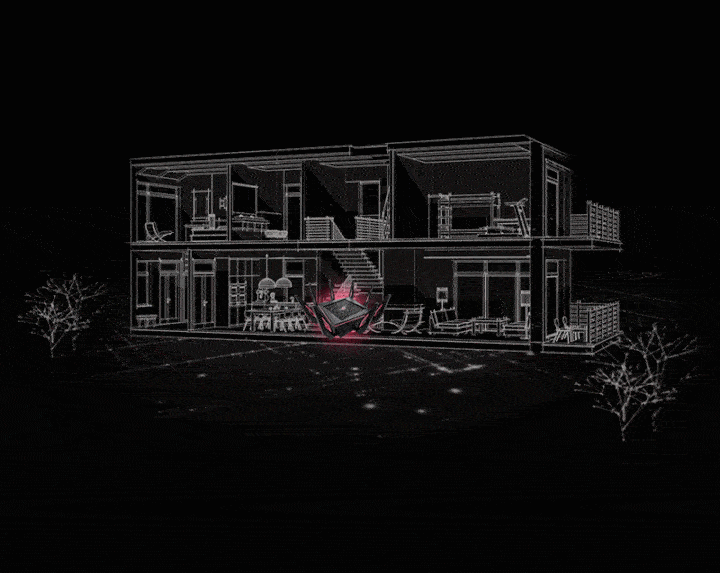
The ASUS AiMesh is actually a convenient and cost-saving way to solve common Wi-Fi problems. You can mix different ASUS router models to expand your AiMesh network. Eliminating any forms of value wasted by junking in or selling your old routers.
System Log
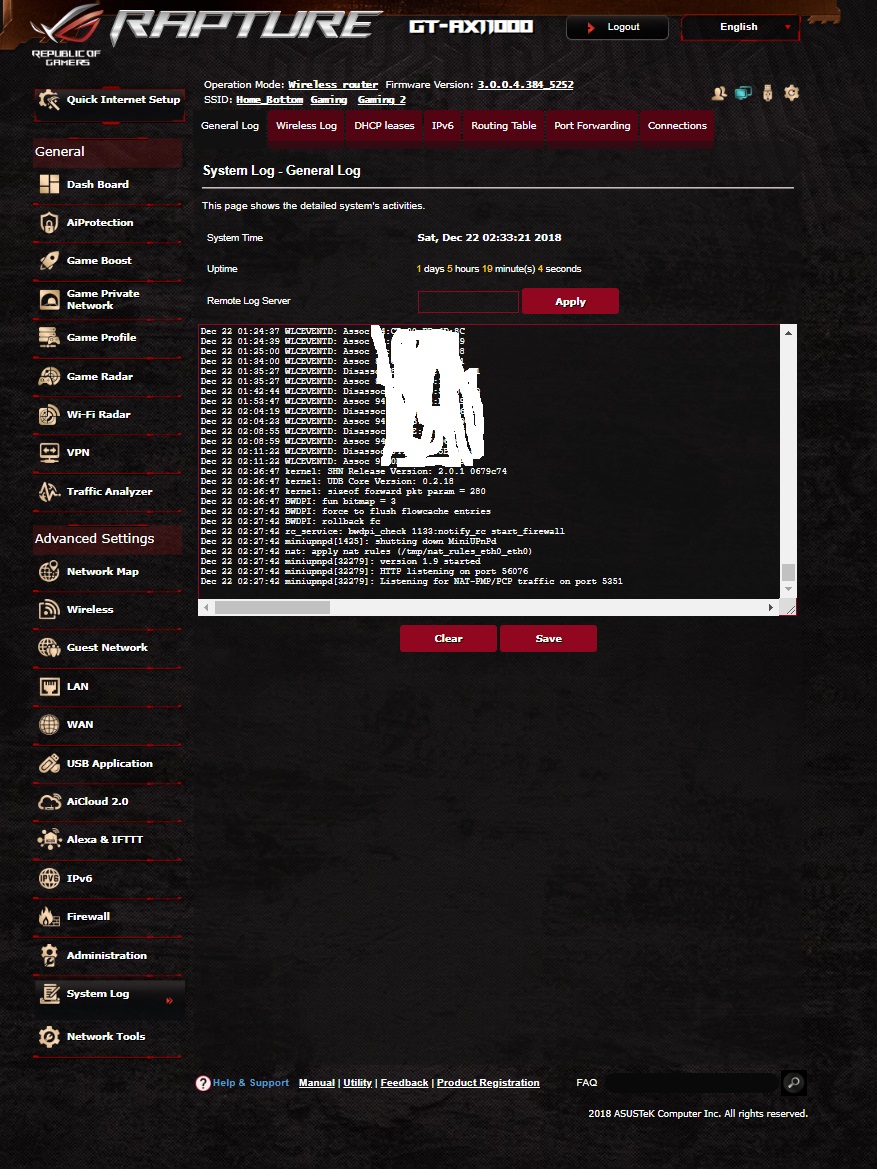
Network Tools
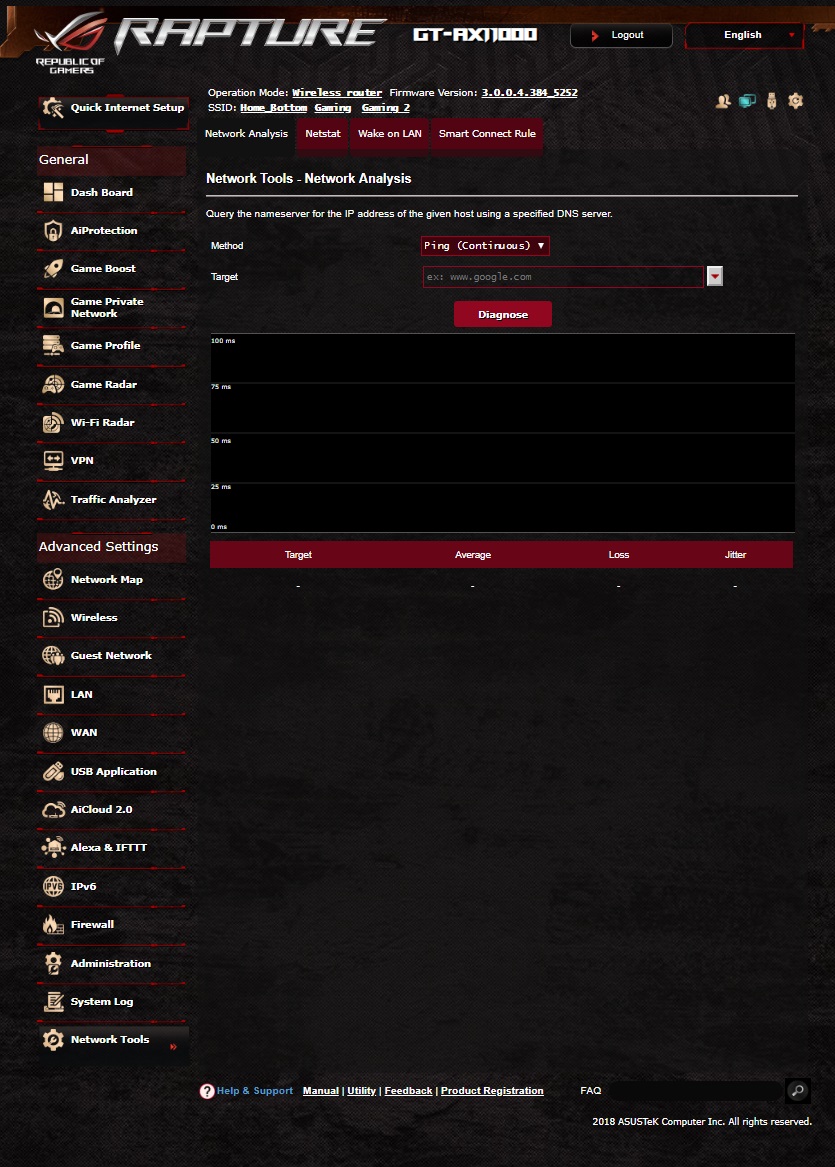
Performance – ASUS ROG Rapture GT-AX11000
In this section, we will be conducting
Testing Methodology
Tools
- Huawei P10 / Samsung S7
- ASUS Vivobook S14
- Computer Desktop
- [email protected]
- ASRock Gaming K4 Z170
- G.Skill Ripjaws DDR4 16GB 2400MHz
- Intel 5 SSD 120GB / 1TB Seagate Barracuda
- Seasonic X-650 KM3
- WD 4TB Home NAS Ethernet
- 120GB SSD Patriot Blast External
Applications
- WiFi Speed Test
- WiFi Analyzer
- Aida32
Tests
- Gigabit Transfer Rate Test
- PC to NAS
- Phone to PC
- Laptop to PC
- Phone to Phone
- PC to External SSD
- Traffic Test
- Gaming Priority – Saturated Bandwidth
Theoretical Speed – 11000Mbps
Before going through our test, let’s first discuss ASUS’ claim of
According to the specification, the 2.4GHz band alone can give you a data throughput of 1148Mbps while the other two 5GHz band can each perform up to 4804Mbps of speed. If you add that up, you’ll get a theoretical speed of 10,756Mbps which is almost the same as the claimed speed.
Gigabit Transfer Rate Test
Before anything else, everyone is not well informed about the term “Gigabit”. Gigabit is a different unit of value than Gigabyte. A single unit of “Byte” is equal to “8 Bit”. The word “Giga” is a unit prefix that denotes a factor of a (short-form) billion.
Therefore, in a real-world scenario, Gigabit equates to 125MB/s of data transfer rate.
Desktop Computer to NAS – Local Data Transfer
For this test, we measured the transfer speed rate by transferring a 10.5GB file from out computer desktop to our network attached storage. The file is composed of a movie and a couple of videos and images.
We also compared the performance of the ASUS ROG Rapture GT-AX11000 against a Gigabit Switch and an AC1200 Router.
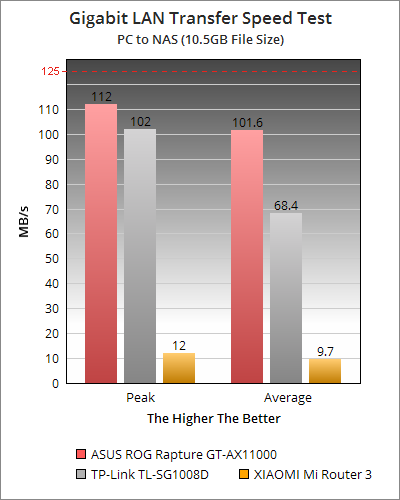
The ASUS ROG Rapture GT-AX11000 gave us a peak transfer speed of 112MB/s where it mostly sustained a 109MB/s speed while transferring a 6GB movie.
We also decided to test the data transfer speed rate via NAS to PC method. We got a slower performance result with a peak of 98MB/s and an average of 58MB/s. This might be the result of a bottleneck in performance. We suspect that the RED Western Digital 4TB drive of our NAS is the culprit. Since this test is basically a transfer of data from an SSD to HDD were as the HDD has a slower read and write speed rate.
LAN Speed Test
For this test, we used a benchmarking tool called LAN Speed Test. This application uses the RAM instead of the hard drive for storage. Eliminating any bottleneck performance from the computers hard drive. We conducted this test for both wired connection and wireless.
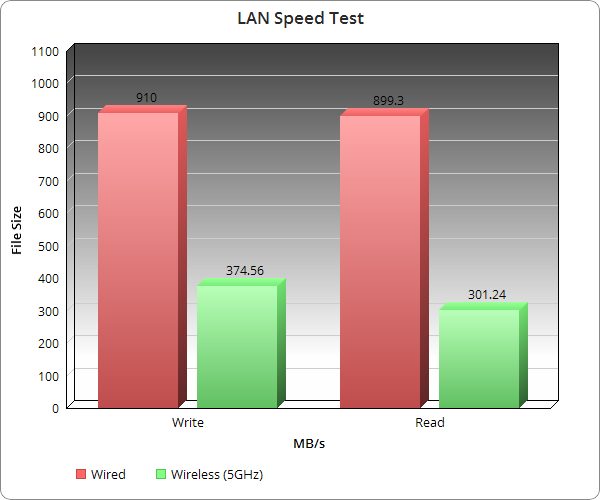
Smartphone to PC – WiFi Speed Test
For this test, we used an app called “WiFi Speed Test” that’s available on Google Play Store. This app allows data transfer from Smartphone to PC via wireless router or LAN connection.
To achieve the highest possible speed, we configured the router to secure an 802.11ac or Wi-Fi 5 connection for both 5GHz frequency and 802.11n for the 2.4GHz. Since the phones that we have here doesn’t support 802.11ax connectivity.
2.4GHz | 40MHz Bandwidth
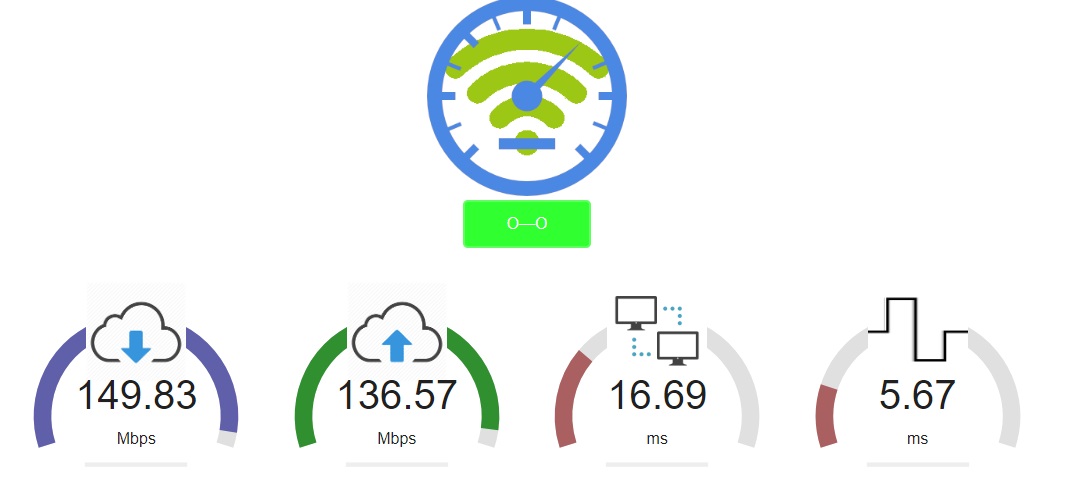
5GHz – 1 | 160MHz Bandwidth
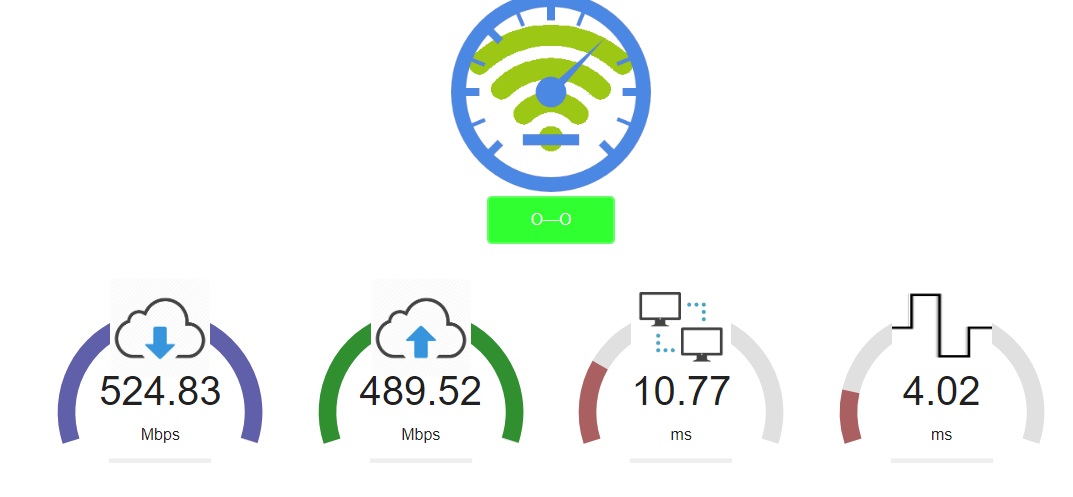
5GHz – 2(Gaming) | 80MHz Bandwidth
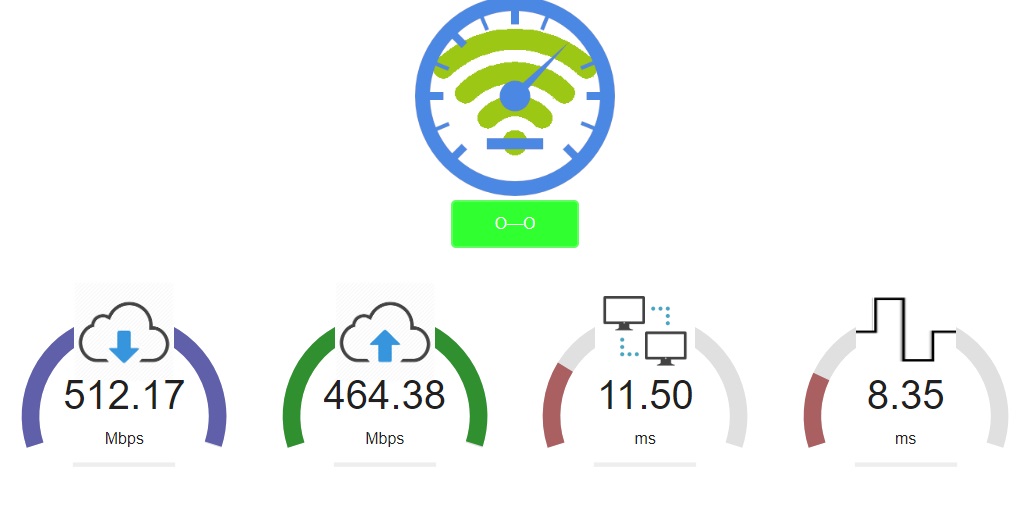
The result of the test shows that both 5GHz frequency can provide a speed rate of more than 270Mbps for both upload and download. The 5GHz-2, which is the SSID for gaming, can peak up to 350Mbps.
Now if you’re wondering why we are not reaching the claimed speed of 4266Mbps for the 802.11ac of this router, well that’s because theoretical speed is different than the real world scenario speed.
Theoretical speed is achievable if certain conditions are met. However, these specific conditions are impossible to achieve in
Laptop to PC – Aida32 Network Benchmark
Similar to the previous test above, we will also measure the bandwidth and data transfer rate of the router using a laptop to a desktop connection. This will still be a local network connection but the difference is its a computer to computer data transfer through wireless to wired passthrough.
We will be using the Network Benchmarking tool of Aida32.
2.4GHz | 40MHz Bandwidth
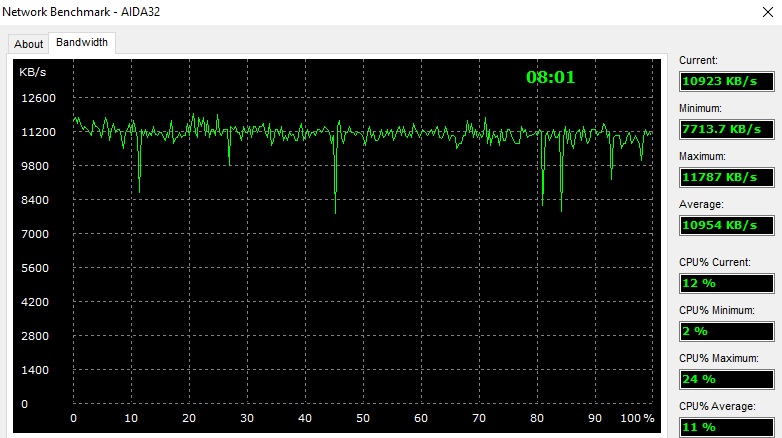
5GHz | 160MHz Bandwidth
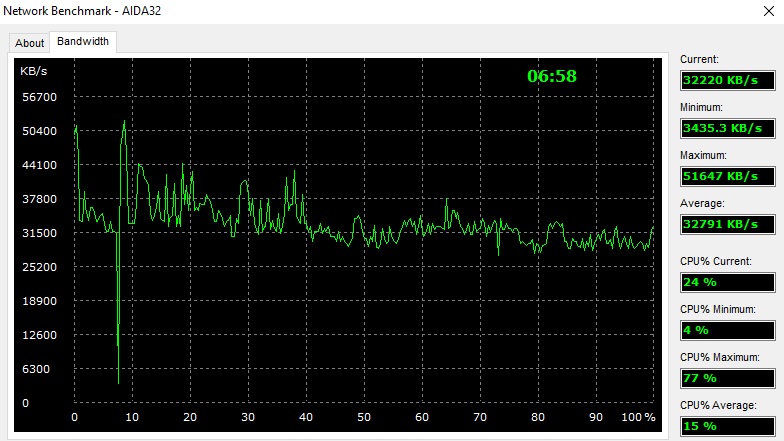
Local Area Network File Transfer (Wireless to Wired)
For this test, we transferred a 6GB movie from one computer to another through a wireless to wired setup.
2.4GHz | 40MHz Bandwidth
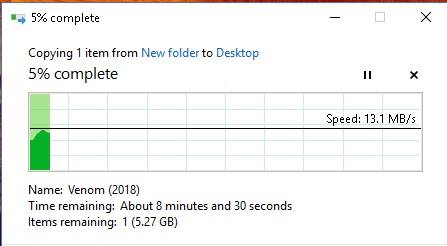
For the 2.4GHz frequency, we got a peak transfer speed of 14MB/s with an average speed of 12MB/s.
5GHz | 160MHz Bandwidth
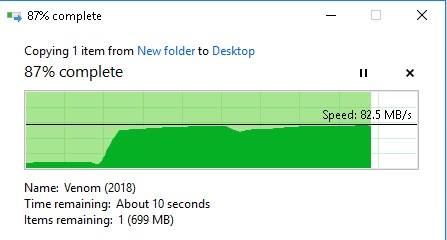
For the 5GHz frequency, we got a peak transfer rate of 84MB/s with an average speed of 80MB/s.
Phone to Phone – WiFi Speed Test (802.11ac)
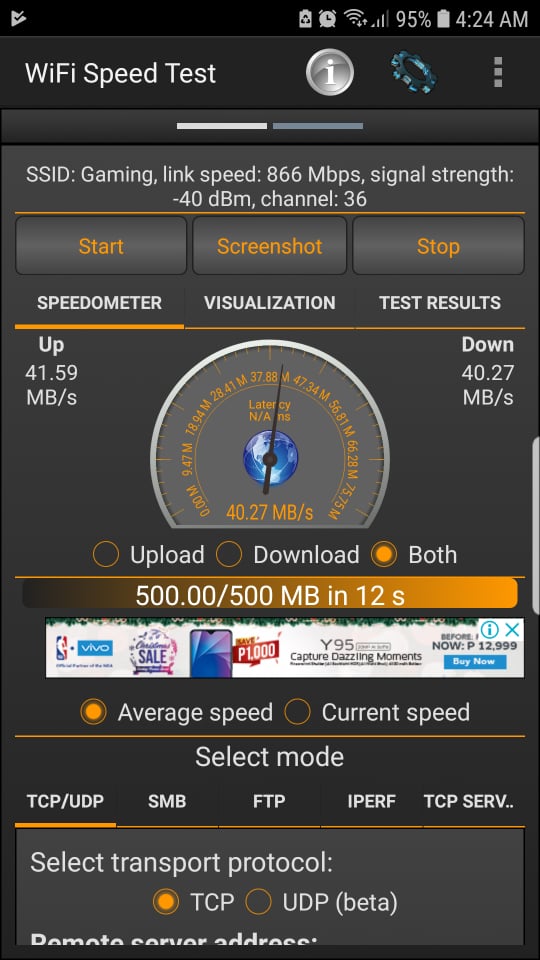
For our local data transfer speed test for a phone to phone connection, we got a peak speed of 52MB/s for the upload and 65MB/s for the download with an average speed of 41.59MB/s and 40.27MB/s respectively.
ASUS AiCloud App to External SSD
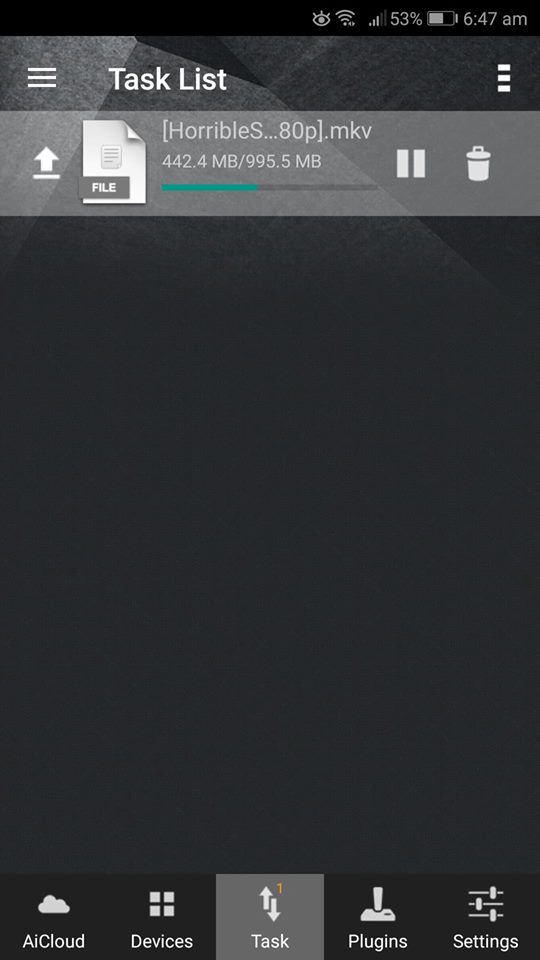
Using the ASUS AiCloud application for Android, we uploaded a single 1GB video file. The transfer speed is roughly around 3 to 6MB/s which is quite slow. The speed is probably limited by the app or some certain security conditions implemented by the Android operating system.
PC to External SSD
Our last test is measuring the data transfer speed by downloading and uploading a file from our PC to the external SSD attached on the router.
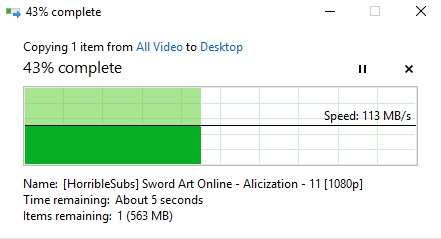
Transferring a single 1GB video file, we got a peak speed of 114MB/s and the router almost maintained the speed.
Gaming Traffic Priority – Saturated Internet Bandwidth
For this test, we will simply test the gaming traffic priority of the router. We will simply saturate the bandwidth of out ISP while playing a video game. This will let us know if the router will really prioritize the packets for gaming.
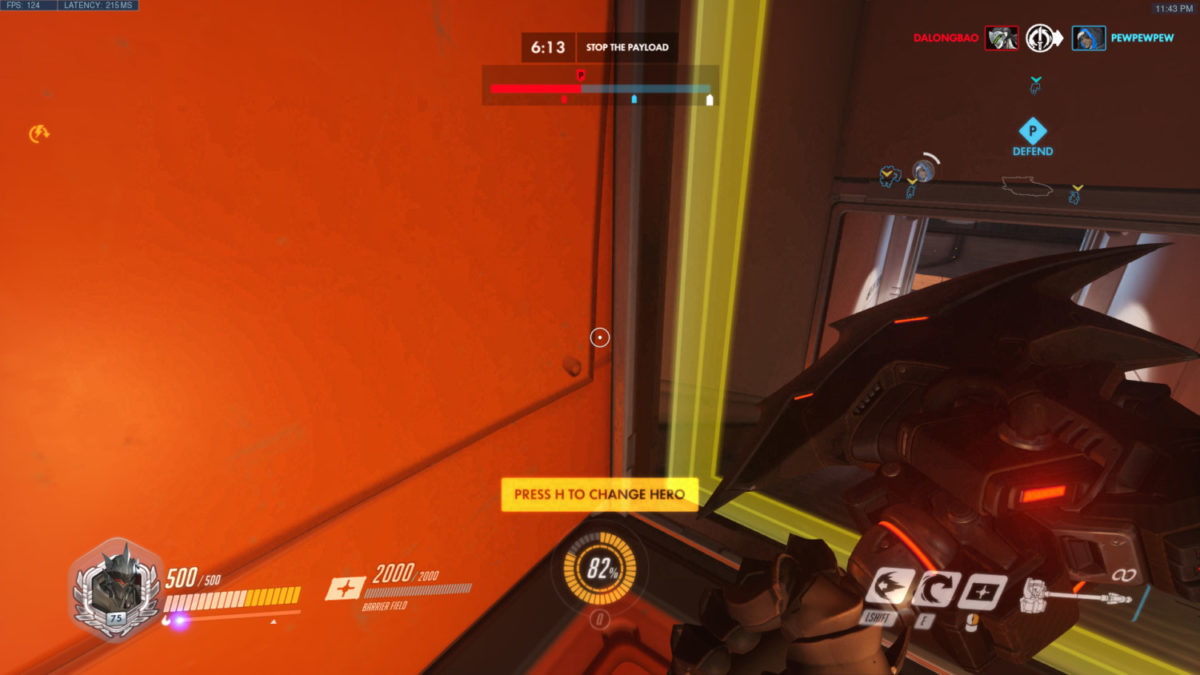
To saturate and consume the bandwidth of our internet, we downloaded a couple of files and videos. While in the process of downloading, we went on a play a game called Overwatch. Despite having our bandwidth saturated at 99%, the router is performing really well to prioritize gaming information. However, it’s not as smooth as we thought it would be.
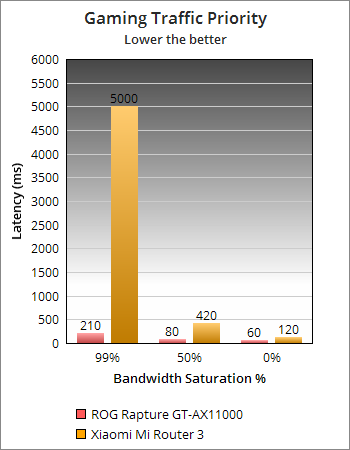
For the game Overwatch, any latency above 100ms is typically considered bad. For this test, we got a decent latency hovering around 180 to 250ms which is not bad at all given the situation. We did the same test using a different router called Xiaomi Mi Router 3. Our result went sky high with latency reaching as high as 5000ms. It was
Conclusion
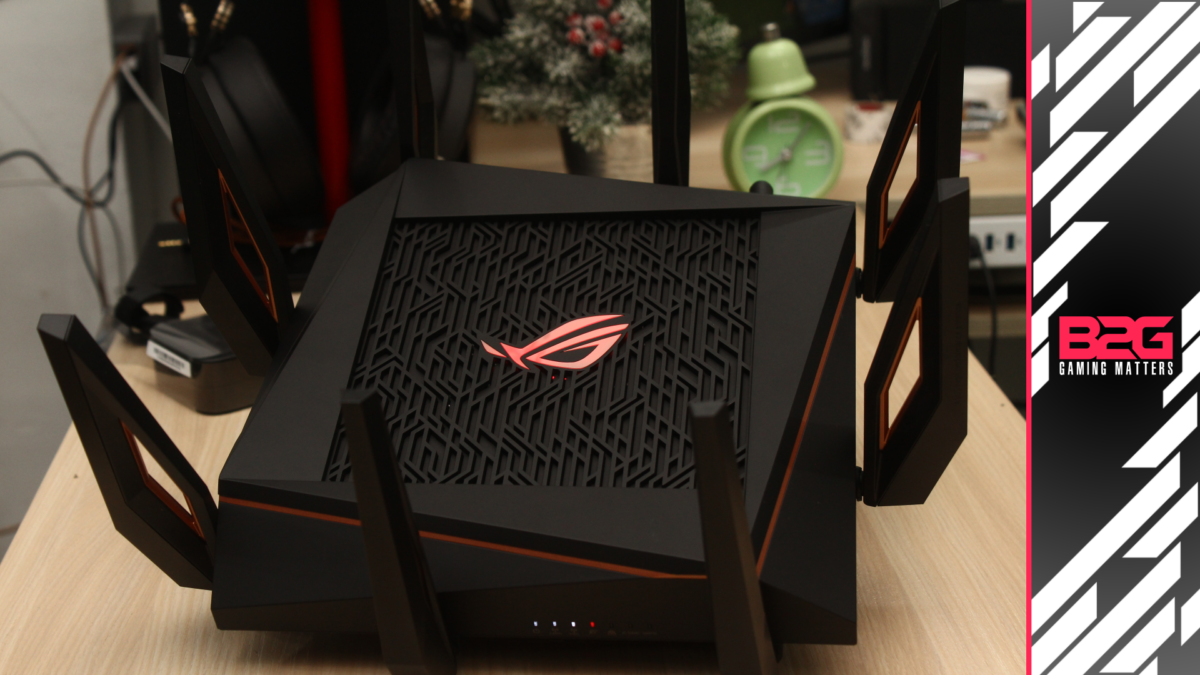
The ASUS ROG Rapture GT-AX11000 is definitely one heck of a good looking router. Its modern design and overall aesthetics set itself apart from other routers that are within the same or similar price point. However, as we already mentioned above, the design closely resembles the RT-AC5300 router with a few different design adjustments.
The GT-AX11000 router carries the ROG branding name of ASUS which is their product lineup designed for gamers. The brand markets this router as a gaming oriented router that every gamer needs. It
In terms of features, this router has it all. From QoS to port forwarding and VPN and up to unfamiliar features intended for gaming. It also features the latest Wi-Fi standard, the 802.11ax or Wi-Fi 6, and MU-MIMO Support with OFDA (orthogonal frequency division access). It even has built-in security that helps protect every connected device. So instead of your anti-virus being at the front lines of defence, the AiProtection takes the role of the first line of defence for any online threats.
Lastly, in terms of its price and performance, the ASUS ROG Rapture GT-AX11000 is a top-tier router for any type of consumers and enterprise. It has every feature that even companies and business establishments will benefit from having this router. Although, this router is more inclined and marketed towards gamers. As of this writing, the SRP of this router is not yet available but we saw it on Newegg being sold for PHP25,000.
Final Thoughts…
The ASUS ROG Rapture GT-AX11000 is a kind of router that almost has everything you will ever need from a wireless router at home. Despite being really good in terms of features and performance, it’s still by far from being a perfect one. It also still has a fair share of pros and cons.
In terms of pros, you have the latest 802.11ax standard, MU-MIMO Support with OFDA (orthogonal frequency division access) which makes data throughput ten (10) times better than 802.11ac theoretically, a 1.8GHz 64-bit quad core that eliminates any processing bottleneck performance causing higher latency, gaming intended features such as “Gaming Traffic Priority” and a 2.5GE RJ45 gaming port. There’s more to say to be honest but let’s highlight the ones that are really eye-catching and greatly enhance the overall performance of this router.
In terms of cons, there are a few things worth mentioning. The size is for one. It’s bulky will surely consumer space at home. Another is the price. Definitely, like what Uncle Ben says “With great power comes great responsibility“. The same thing can be said to any products on the market. “With great features and performance comes great selling price“
Another thing worth mentioning is the difficulty of setting up an accessible router attached external drive. A kind of accessible drive that you can edit, write on it, and format it. Something similar to having a NAS. Though it can be easy if you know what you’re doing but for those that’s new to this, it will be confusing and challenging.
Lastly, it is also worth mentioning the future value of this kind of router. Setting aside the performance, features, price, and quality. If there’s one common denominator for all devices and gadgets, that will be its use and value in the future. Something like after 10 years or so.
Fortunately, the ASUS ROG Rapture GT-AX11000 has built-in support for
With that being said, this then ensures the future value of this router. Although it is up to every consumer to decide what to do with their routers.
Considering every aspect of this router , its performance, features, quality, and price, we can highly recommend this router without a doubt. The ASUS ROG GT-AX11000 is definitely one amazing router to have. It’s quality and premium overall. Garnering itself a Back2Gaming Gold Award.

Related Articles
- ASUS ROG RAPTURE GT-AC5300 Tri-Band WiFi Gaming Router Review
- ASUS RT-AC88U AC3100 Dual Band Wi-Fi Router Review



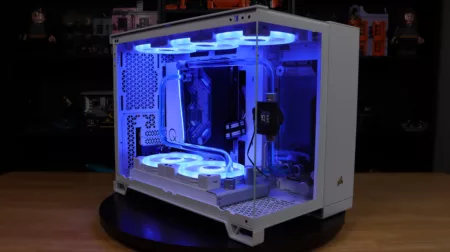


9 Comments
HM
Serge Latulippe 10gb!!!!! Ca commence a être du routeur
Surely claiming to be 10Gig but only having a single 2.5Gig ethernet port should be considered a negative?!
If someone has more than 1Gig Internet then they HAVE to use that 2.5Gig port, meaning if you link it up to a second switch you are limited to 1Gig. Likewise if you have a lot of WiFi clients you want accessing a NAS, its limited to 2.5Gig total and your WAN to 1Gig.
At this price, I would expect at least two 2.5Gig ports if not full 10Gig ports. Encouraging people to use WiFi over wired is just a bad idea, as the more people do, the slower everyones speed becomes negating the whole point of a faster WiFi standard.
Alex, the bigger issue in my opinion is that the WAN port at the very least SHOULD be rated for 10Gbps since that should be capable of keeping up with the maximum bandwidth the device is rated for and I can find NO documentation of the rated speed of the WAN port at all. And if you look at the product page on the ASUS site, it has a disclaimer for the Wi-Fi not reaching rated speeds, but specifies 802.11ac and lists supporting DUAL WAN, but none of the literature I have found indicates that any of the LAN ports can be designated in the settings as a WAN port instead. Of course, why would you want to do that with only 4 LAN ports besides the 2.5Gbps port?
The two things I feel that ASUS has going for it with their networking products are the native support of VPNs within the settings so you can just set up the router to send all or some data via the VPN instead of setting up your VPN on each device and the AiMesh functionality. At least they offer Tri-Band capable routers so one can be designated specifically for the backhaul if you cannot hardwire all your nodes.
As for the NAS, ASUS is targeting “gamers” and their parents (that probably don’t know any better) with this product. Most either don’t have real need for a NAS or the NAS they would and do use is full of 2 or 3 5400 RPM 3-4TB HDDs for either whole system backup images or as a PLEX server someone else set up for them. Those kinds of NAS would barely saturate the 2.5Gbps port as it is.
I very much agree with you about the LAN ports. The device should have at least as many as the GT-AC5300 and any sub-5Gbps LAN ports should support full link aggregation. Unfortunately, with those demands, we consumers are stuck edging into business and enterprise level equipment. The kick is, that I need a new Wi-Fi router thanks to my current one having connectivity and device recognition issues and stepping up to the new standard was timed almost perfectly. Looks like I will be waiting on Ubiquiti to release some cost effective consumer usable 10Gbps & Wi-Fi 6 products.
Between this and the designs for the VRMs on the Z390 Motherboards, ASUS has gone from one of my favorite consumer/enthusiast hardware manufacturers to near the bottom of my list. I realize that they were one of the top during the previous generation, but they aren’t Nvidia with a stranglehold on their market and almost no competition to justify the premium they are charging for the brand and product line names.
The purpose of dual wan would be to connect to two different internet connections, not to attain more bandwidth to single internet provider with 2 connections.
The 2.5G port can be switched to a WAN port, but both ports are 100/1000/2500
This is a 10G router because the 3 wireless radios add up to just over 10Gbps
Hi,
How did you manage to get 120mb/s read speeds on the SSD connected to the Asus router? I have connected a Samsung T3 SSD to the USB 3.0 port on my Asus GT-AX11000 router but can only see 20mb/s in read speed. I’m sitting on MAC with the latest OSX version. Did you use Samba 1.0 on windows?
I get around 120 MB/S on my Netgear RAX80 as well, it uses the same chipset as this minus the extra 5Ghz band. I tested using a Samsung T5 1TB connected to the router and the test device was a Dell Inspiron 7577 Gaming with an Intel 9260ac, HT160 mode was enabled.
This router has USB 3.1 ports not 3.0 so it support much faster speeds. And actually woulds great with a
(5) Glyph Technologies 8TB Blackbox Pro 7200 rpm USB 3.1 Gen 2 Type-C External Hard Drive set up using one of the ports as backup/nas drive. I average 180-200MB/s data transfer speed via the USB 3.1…with max speeds being 220MB/s which I think is drive limited.